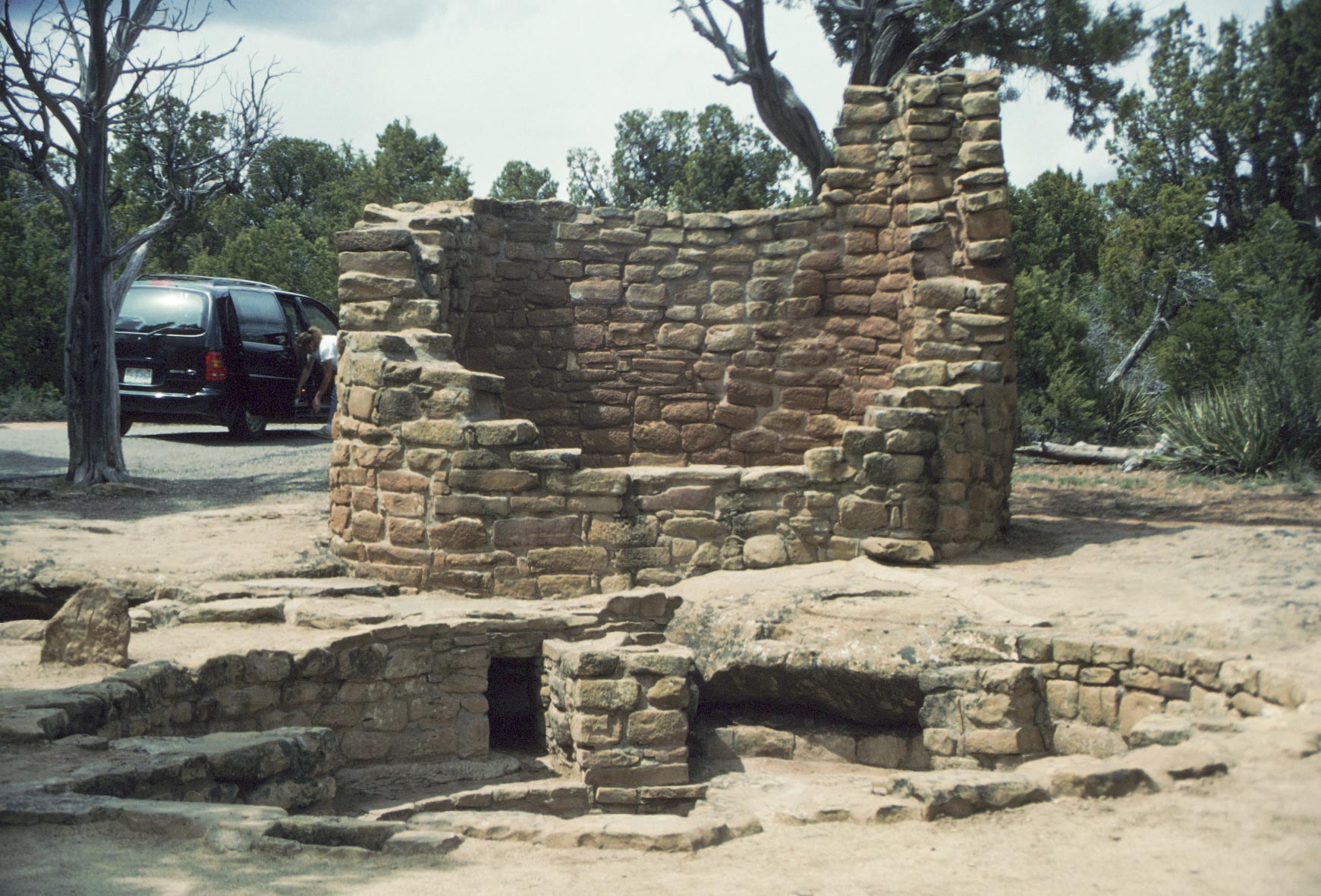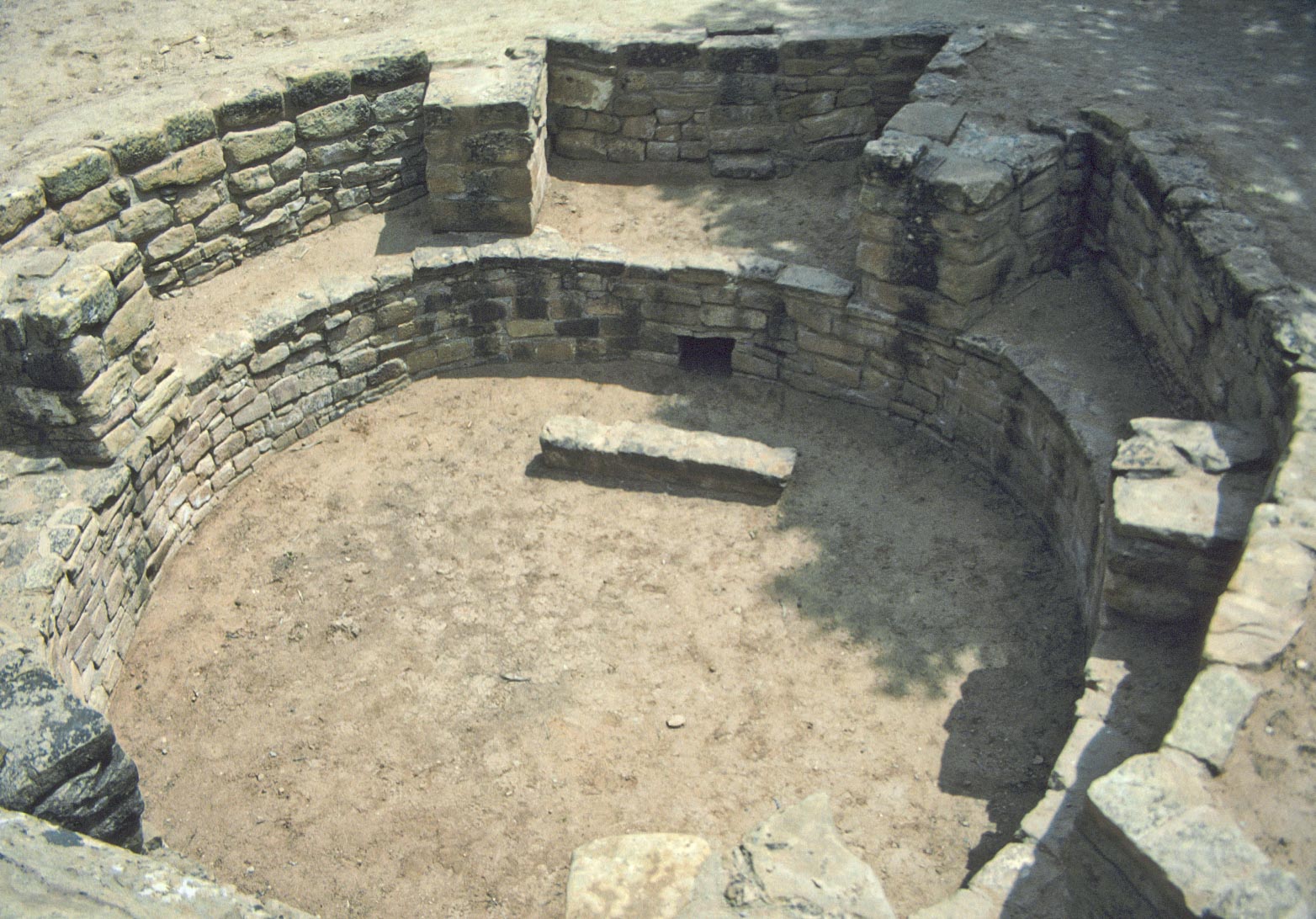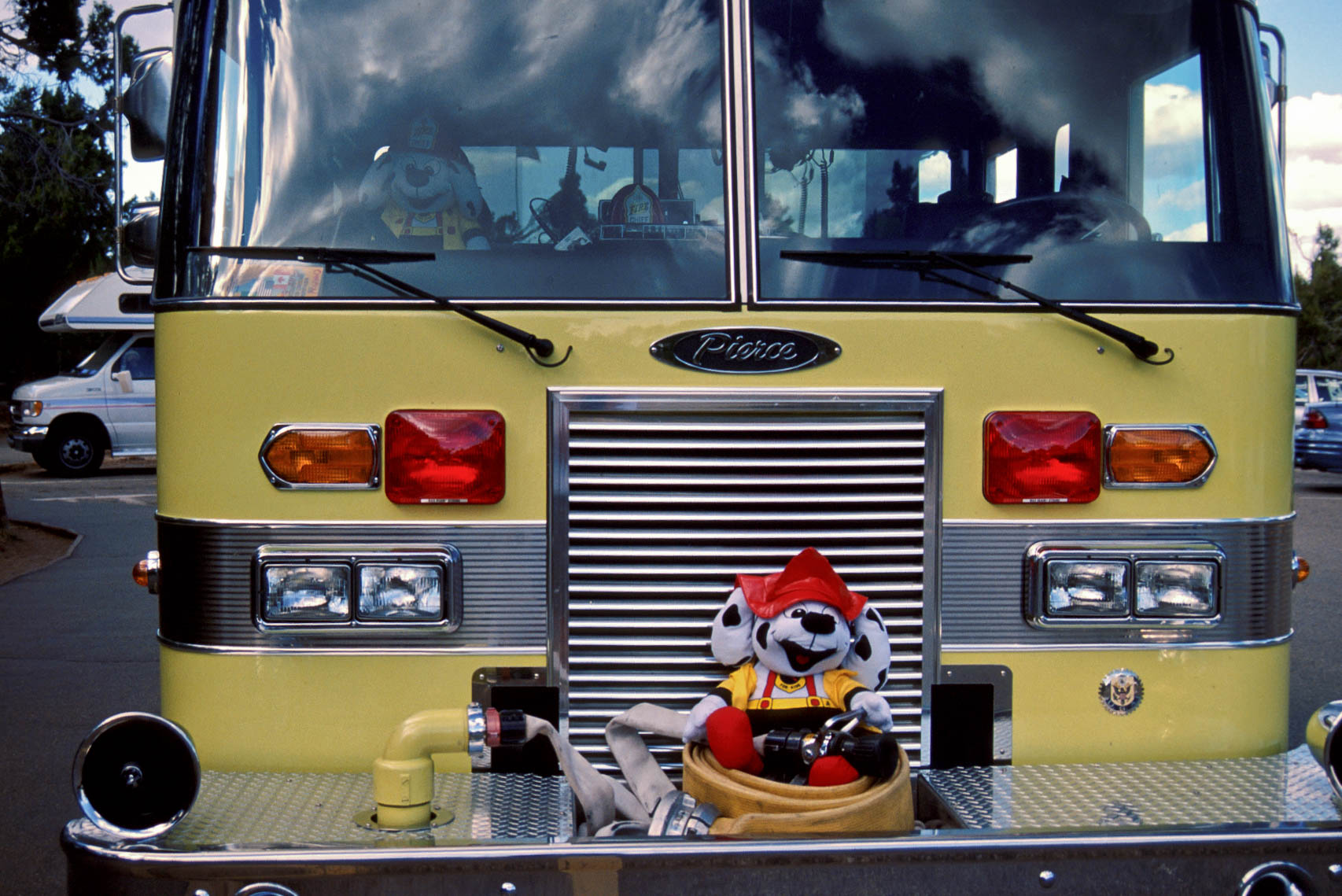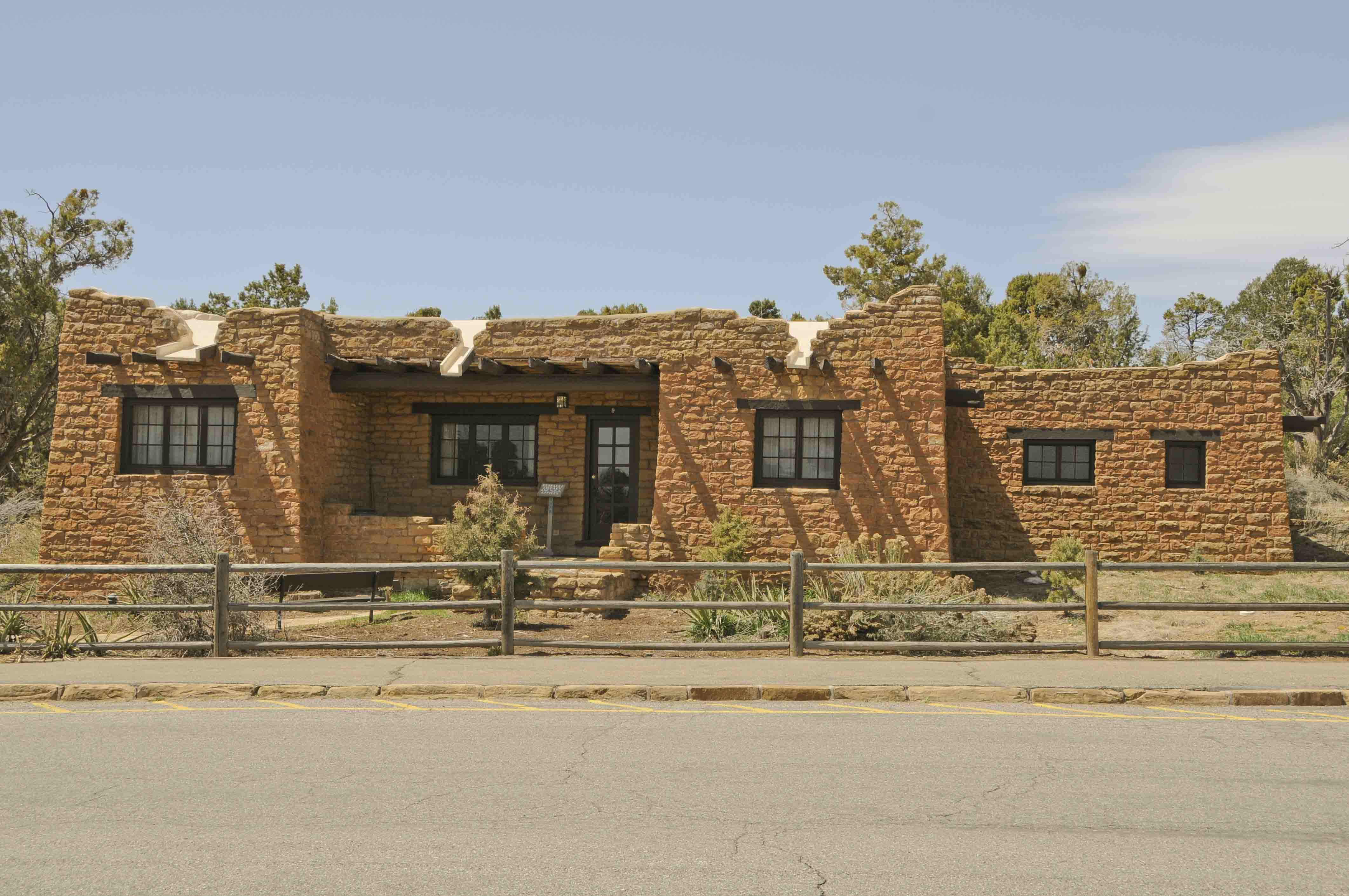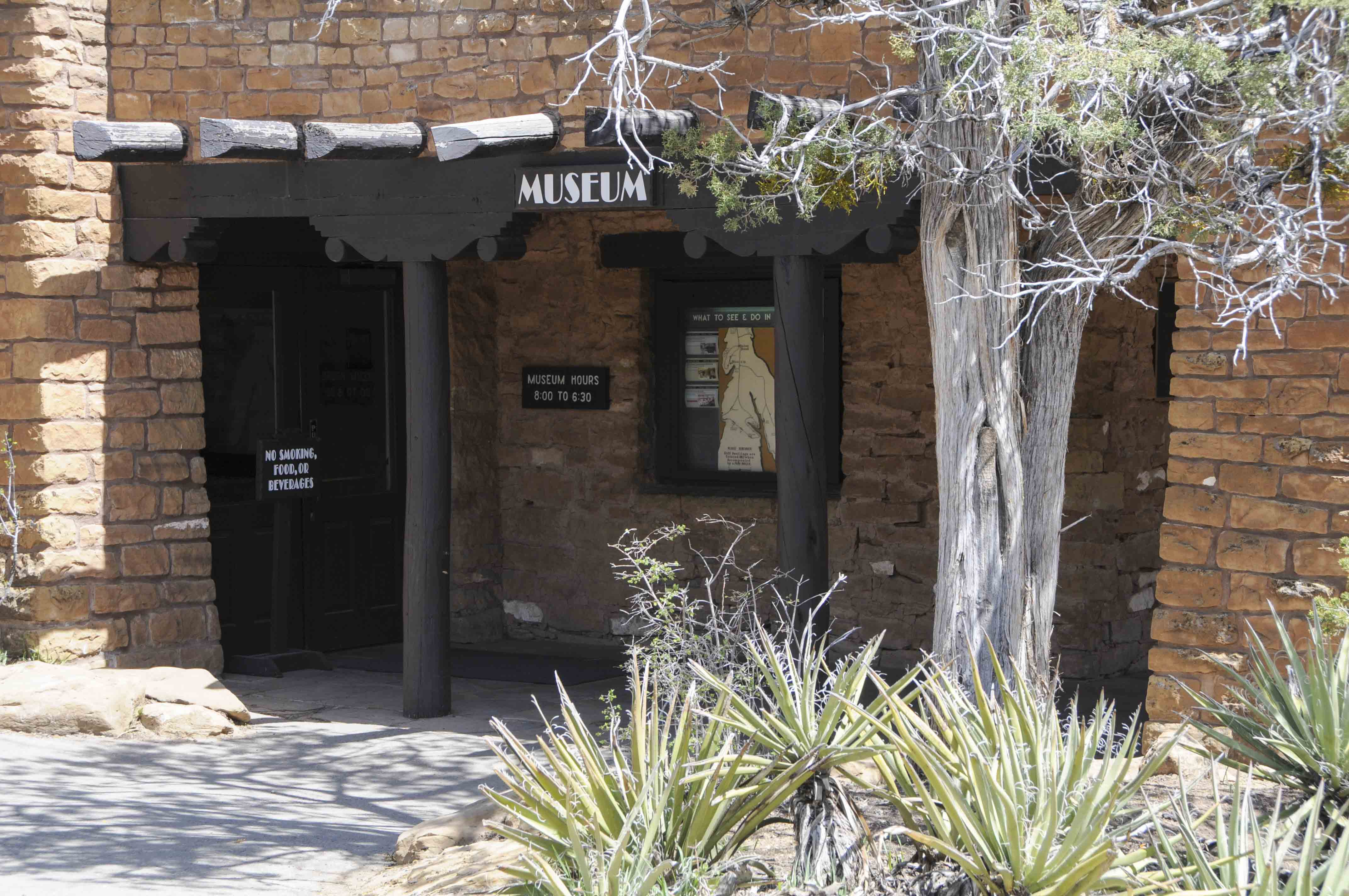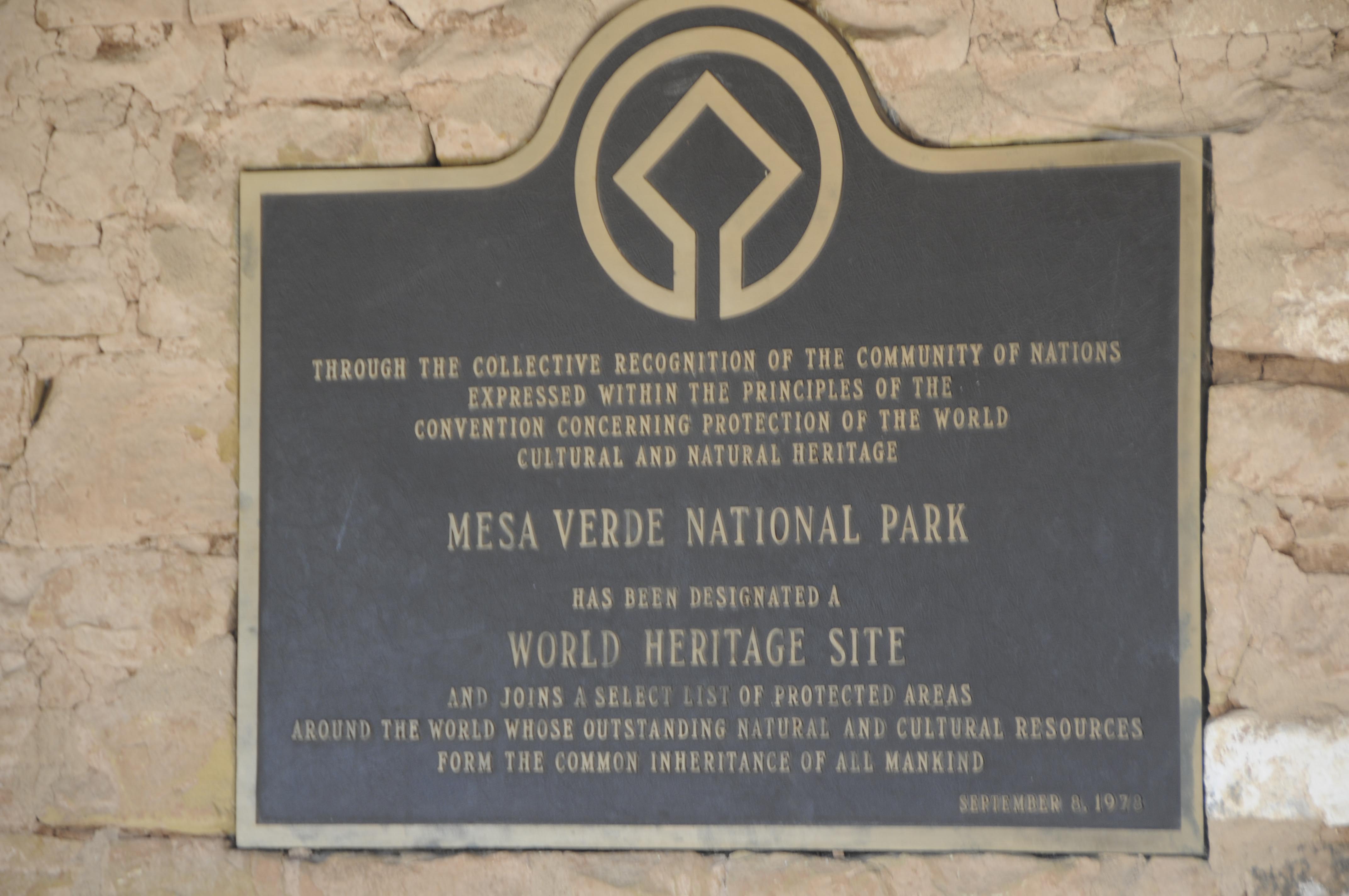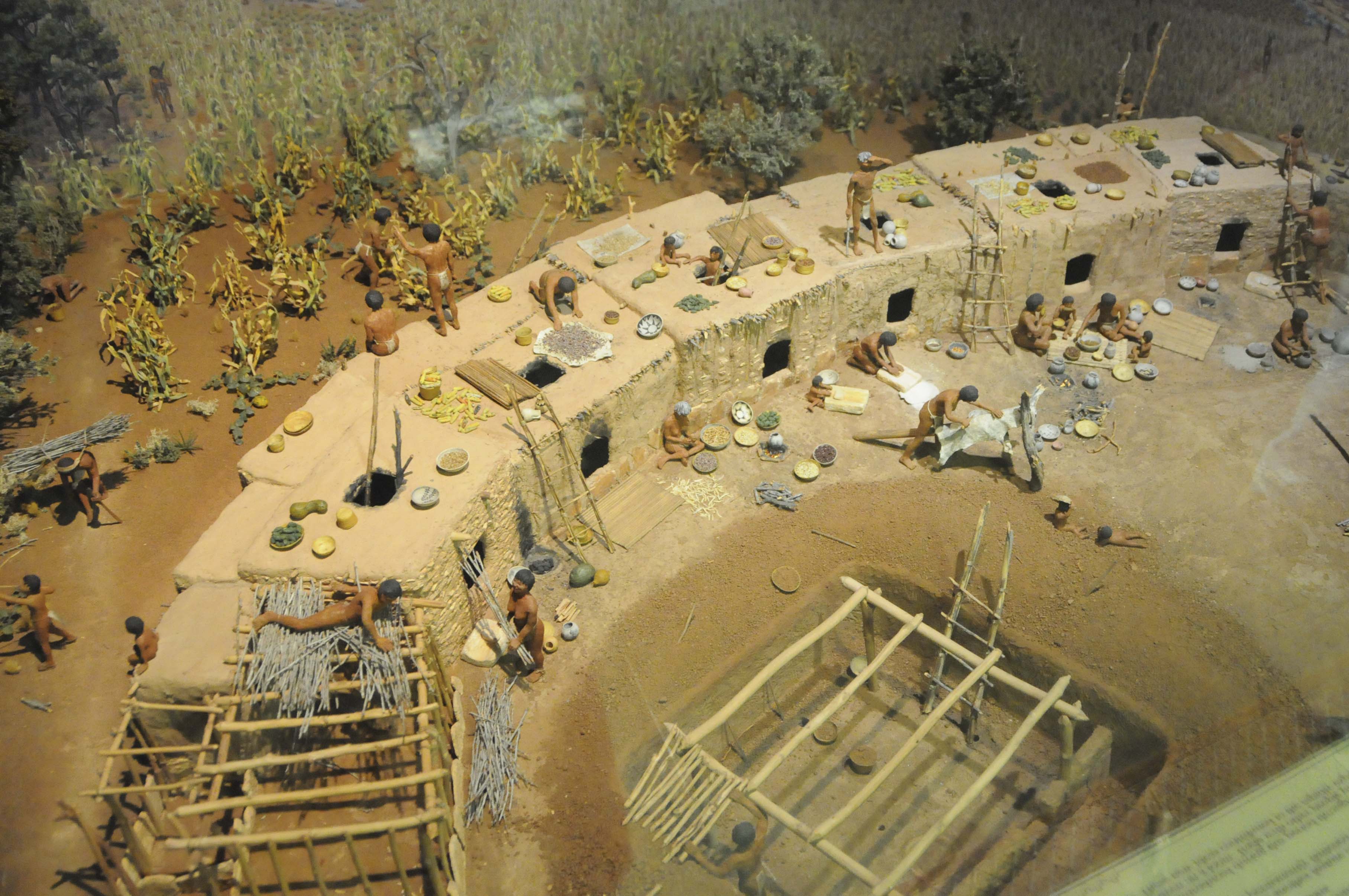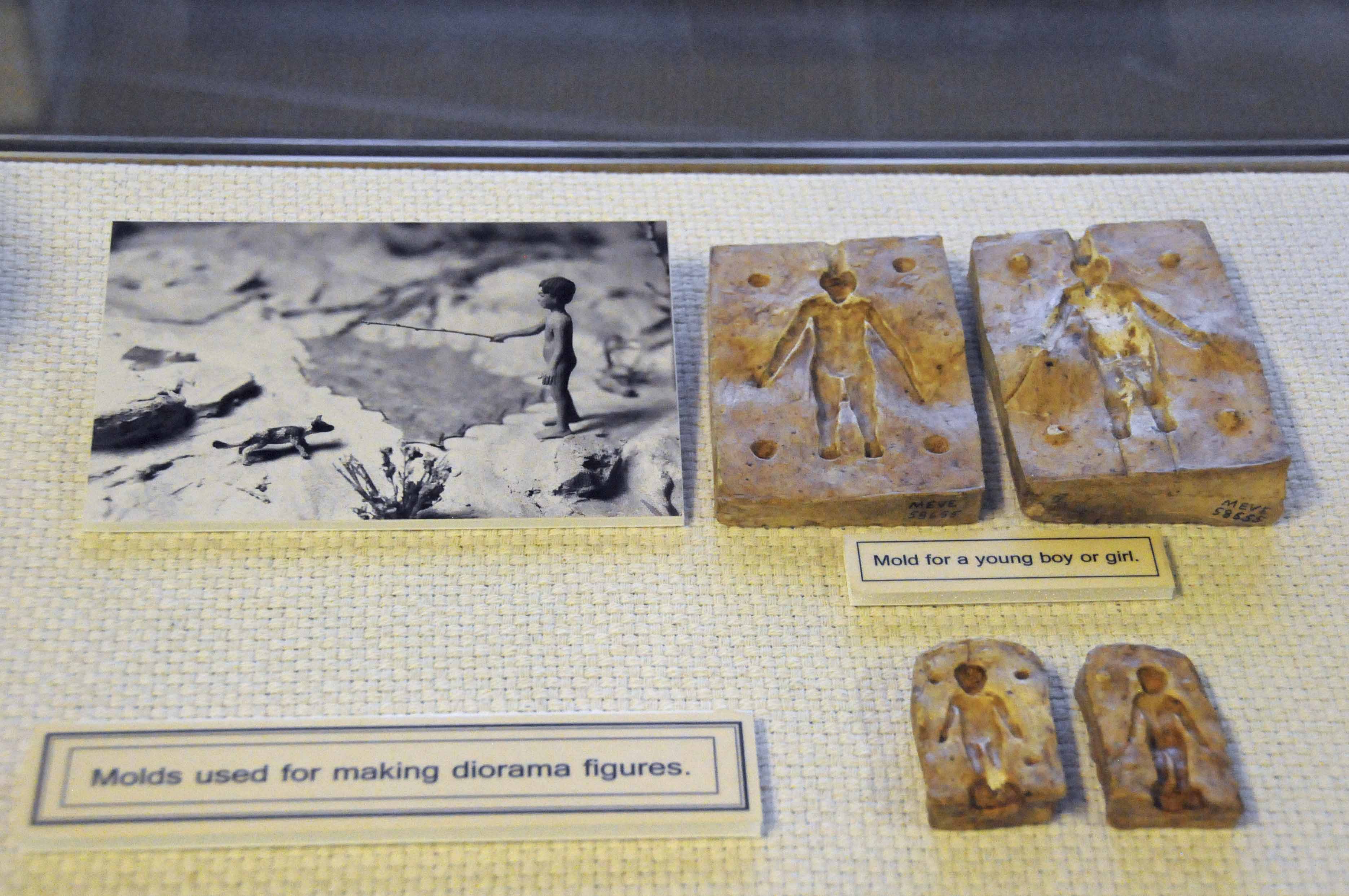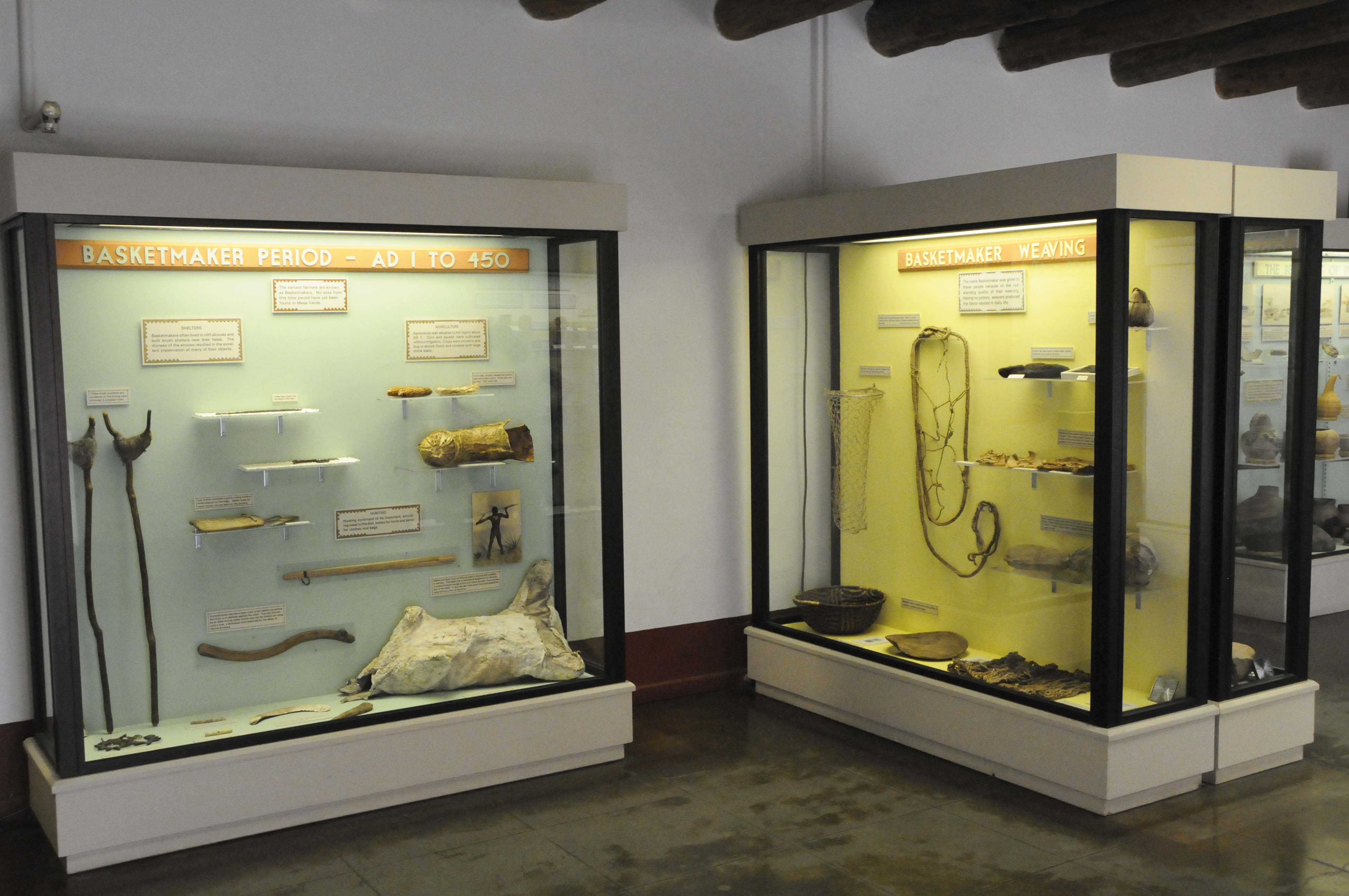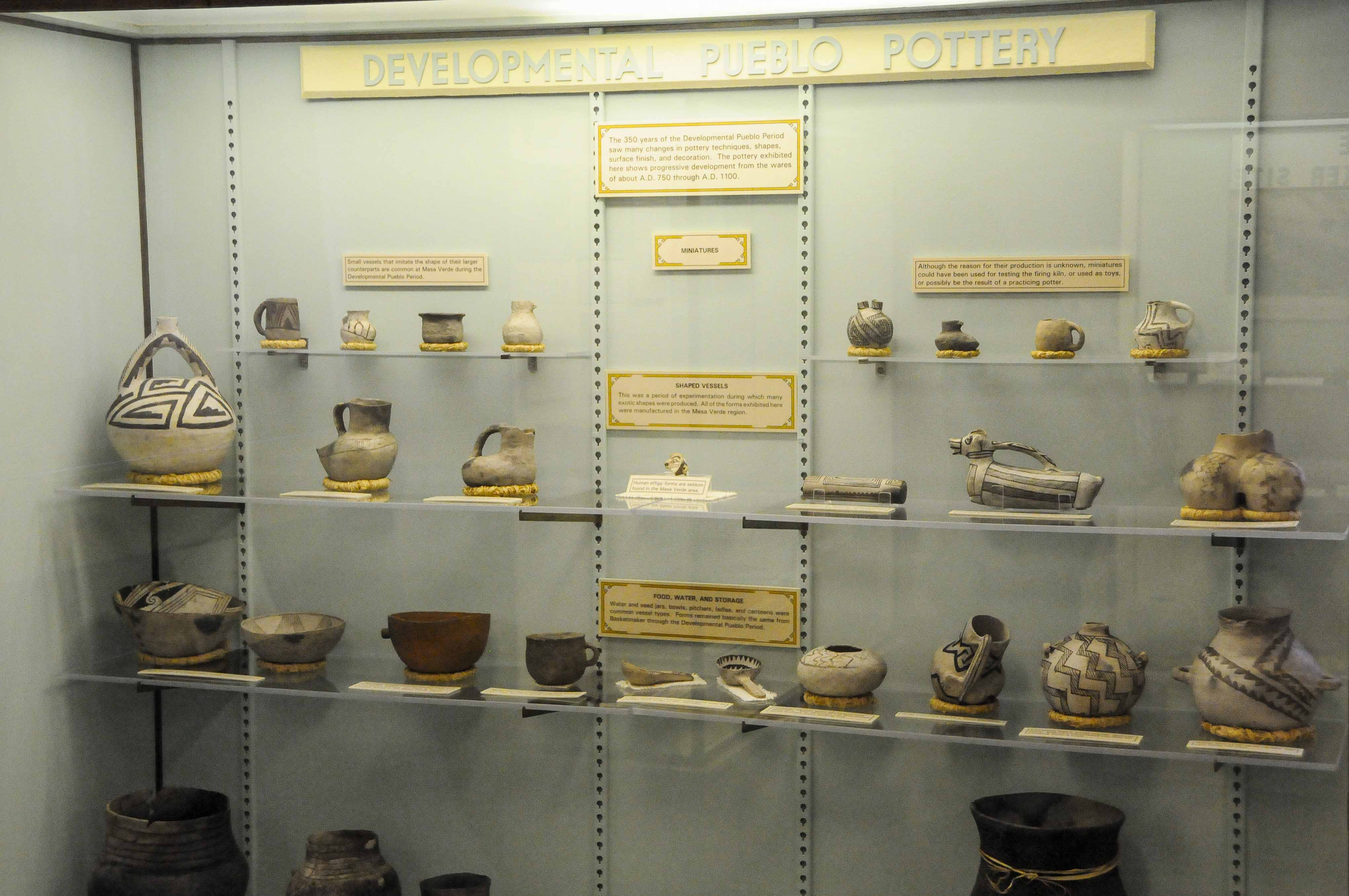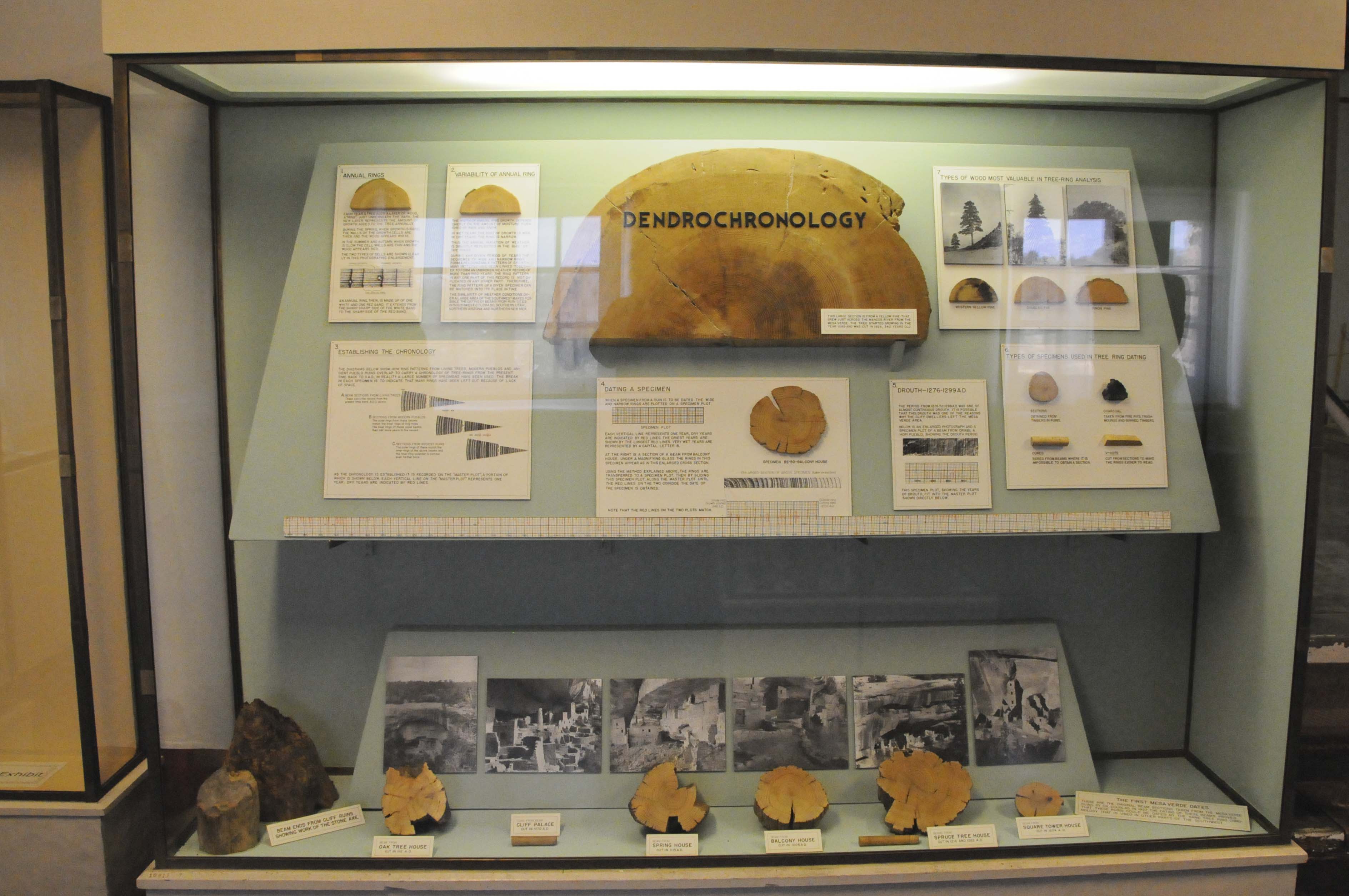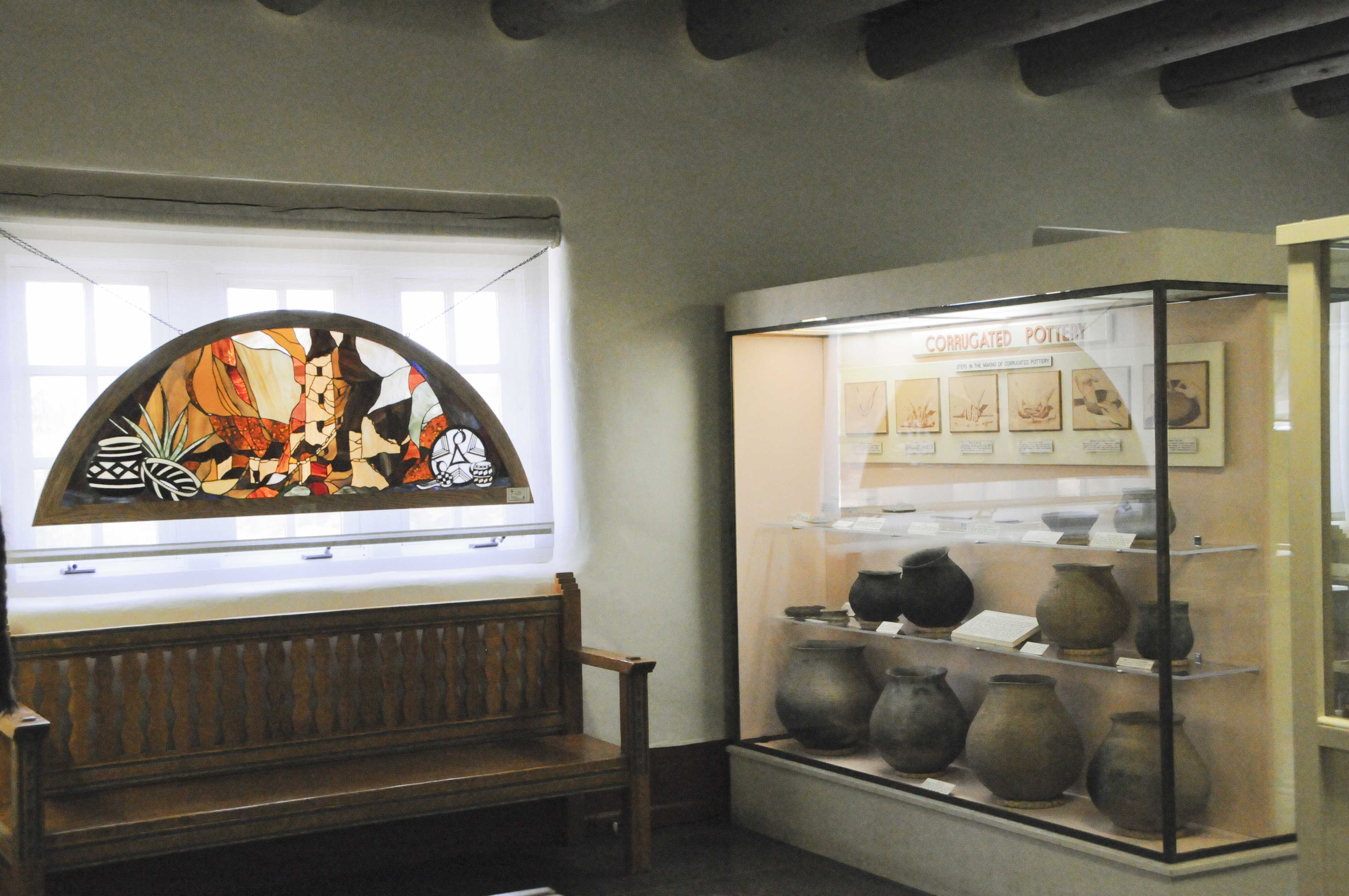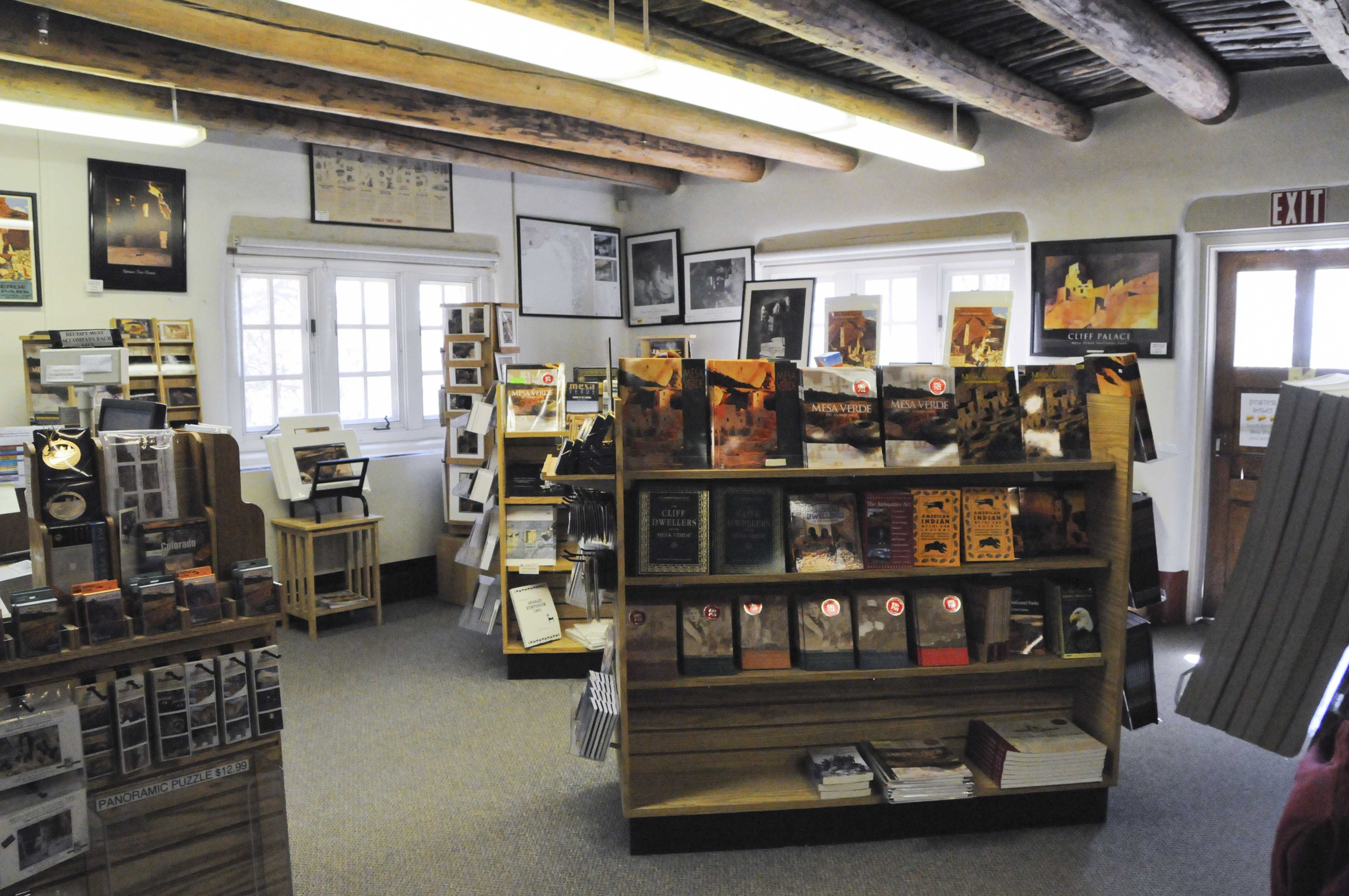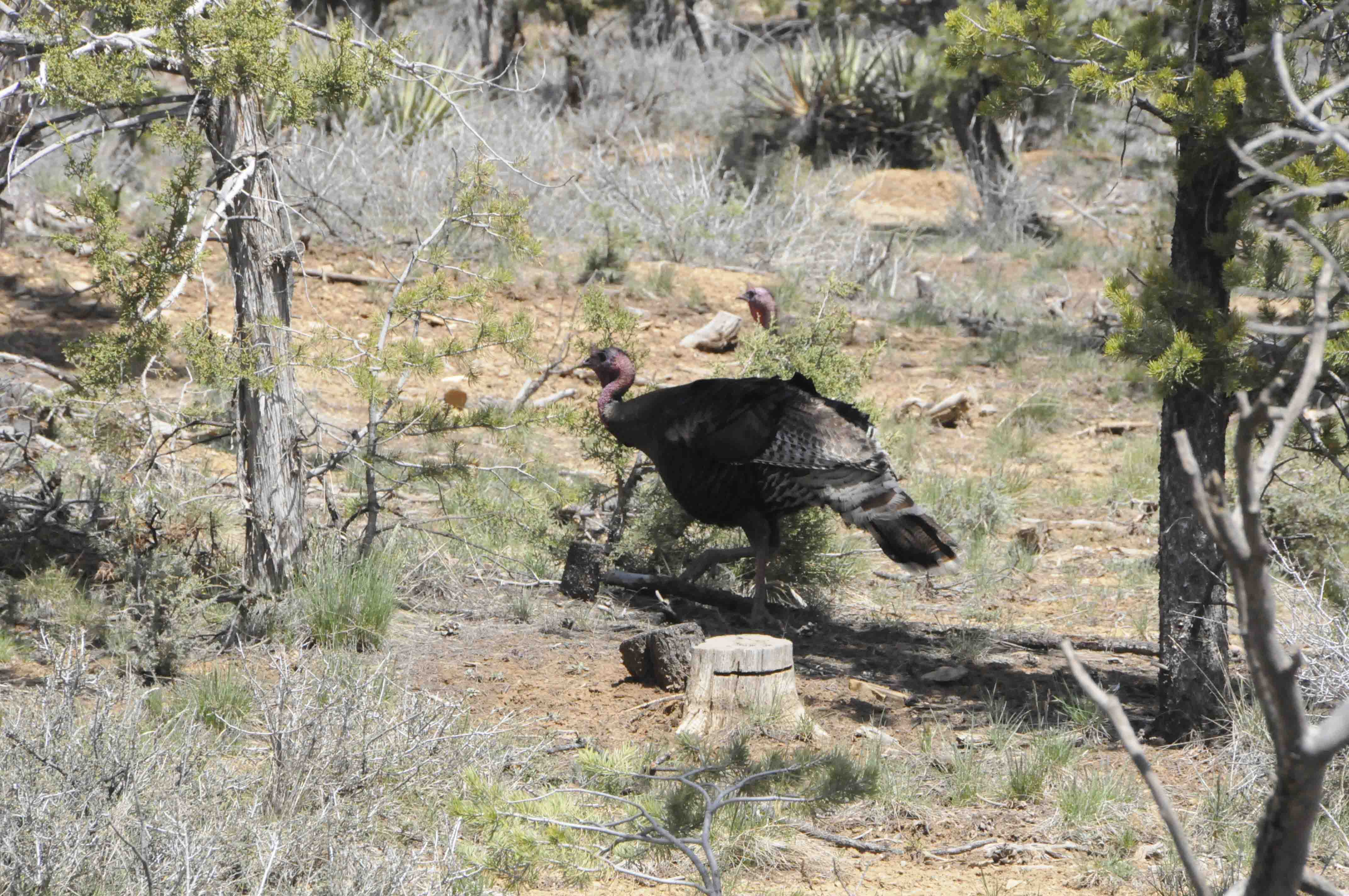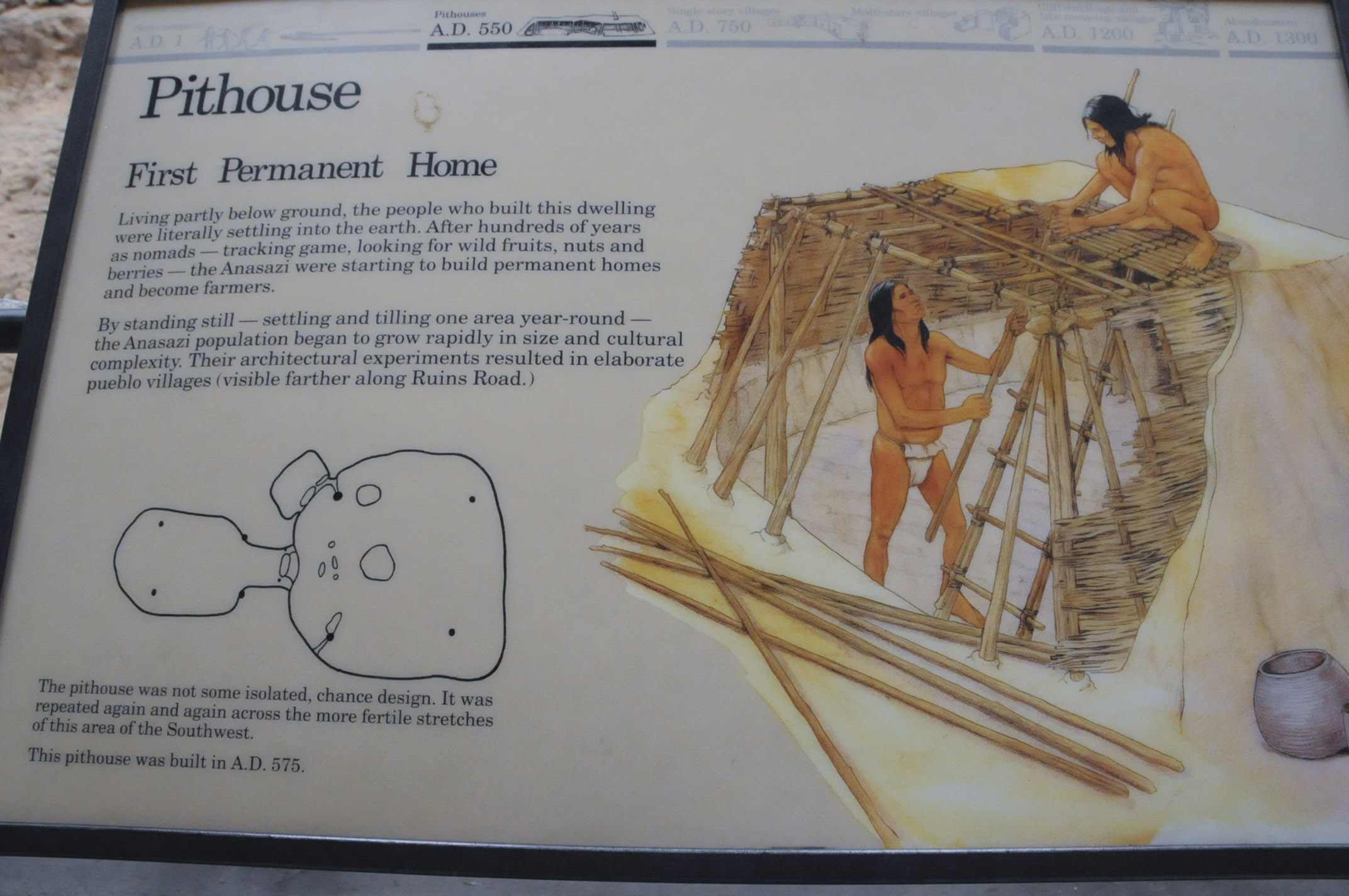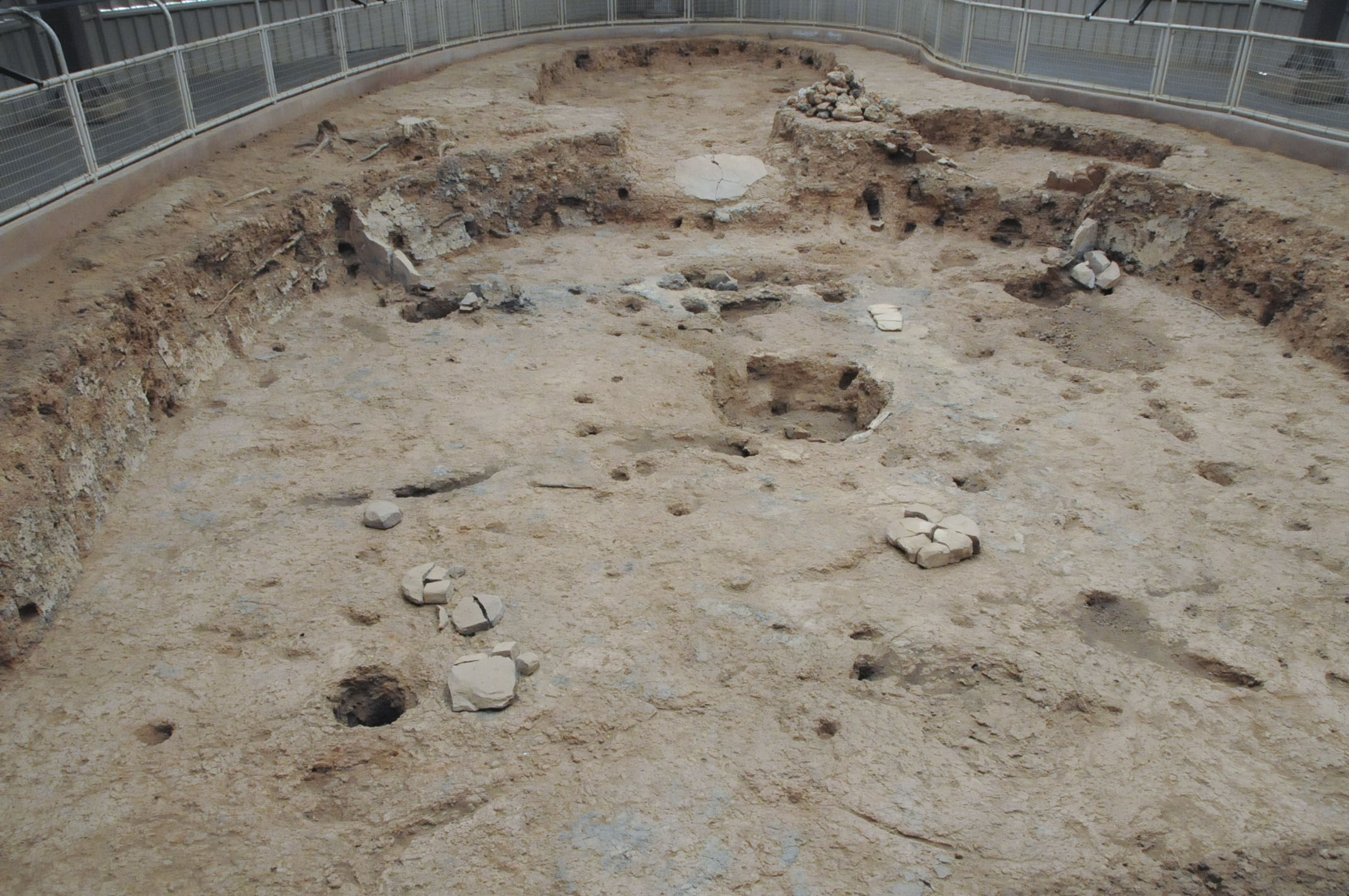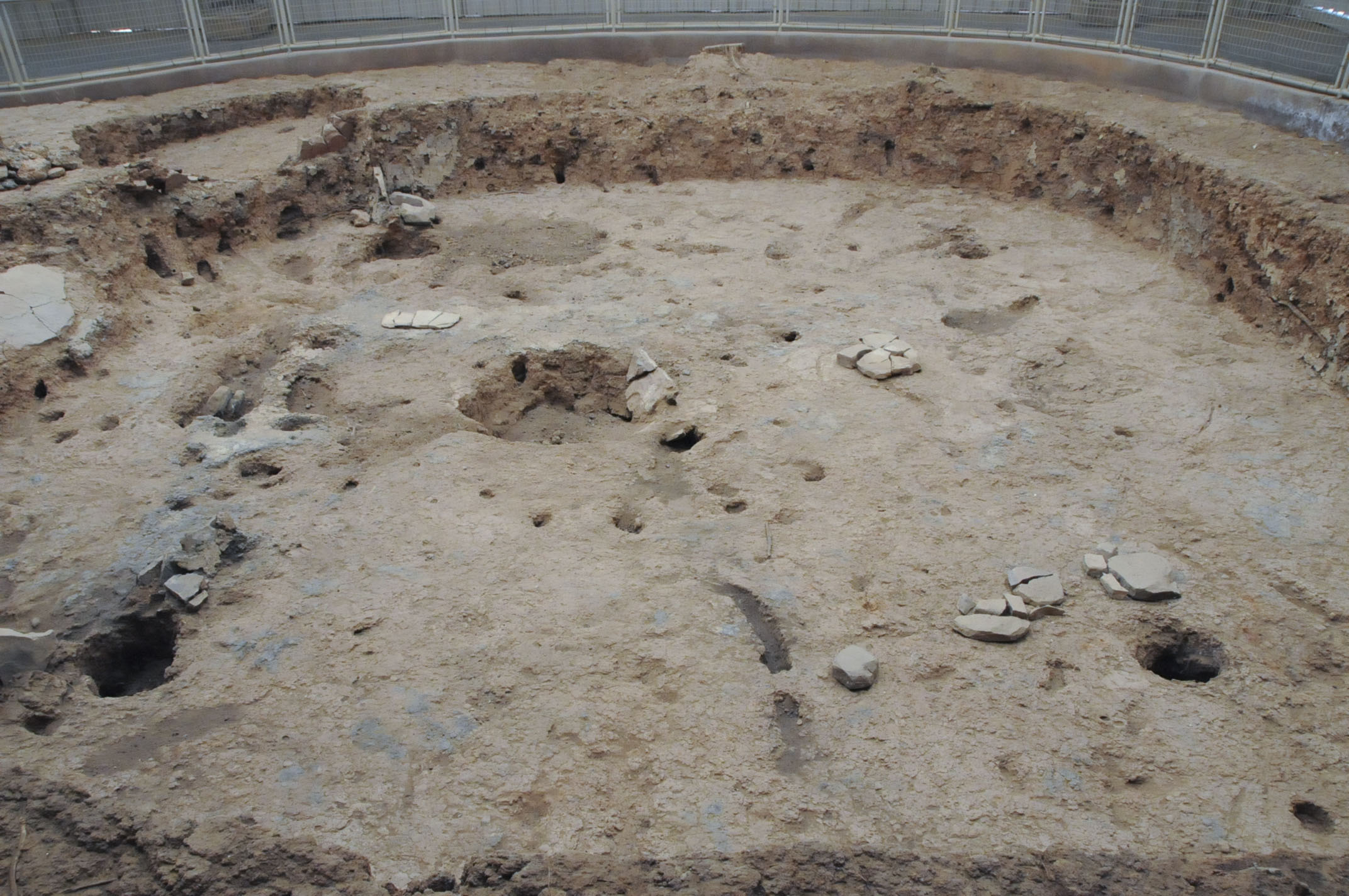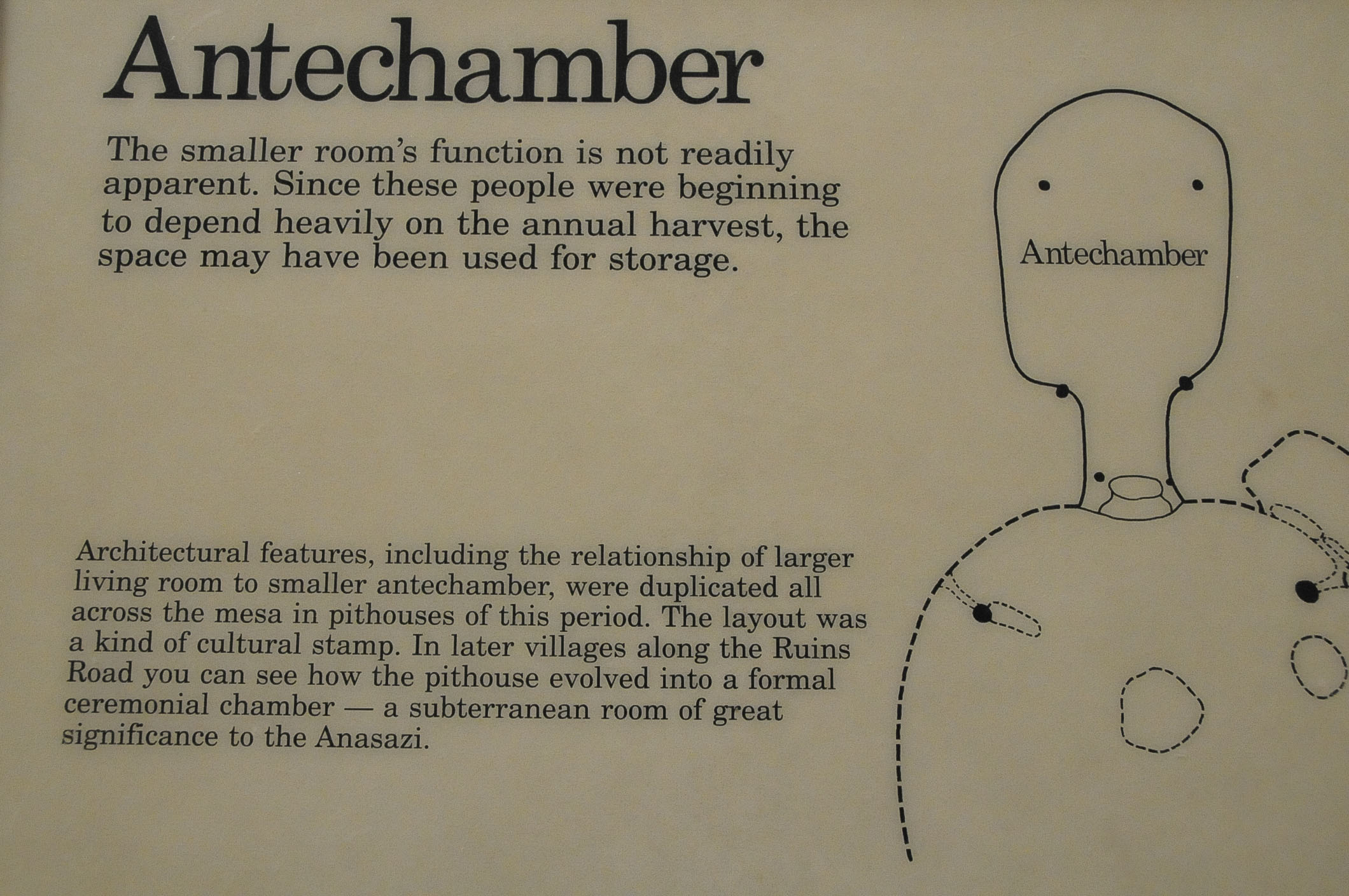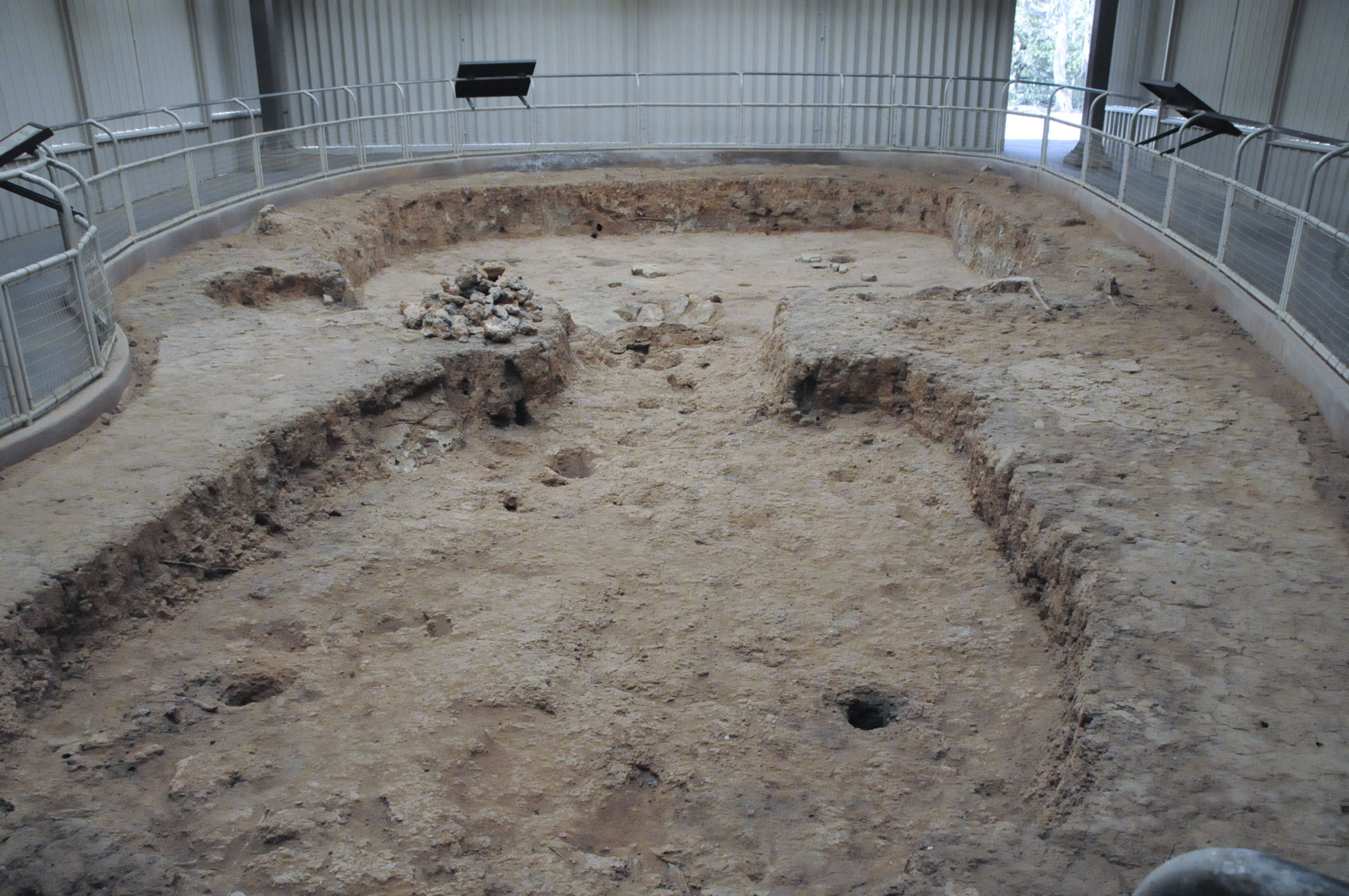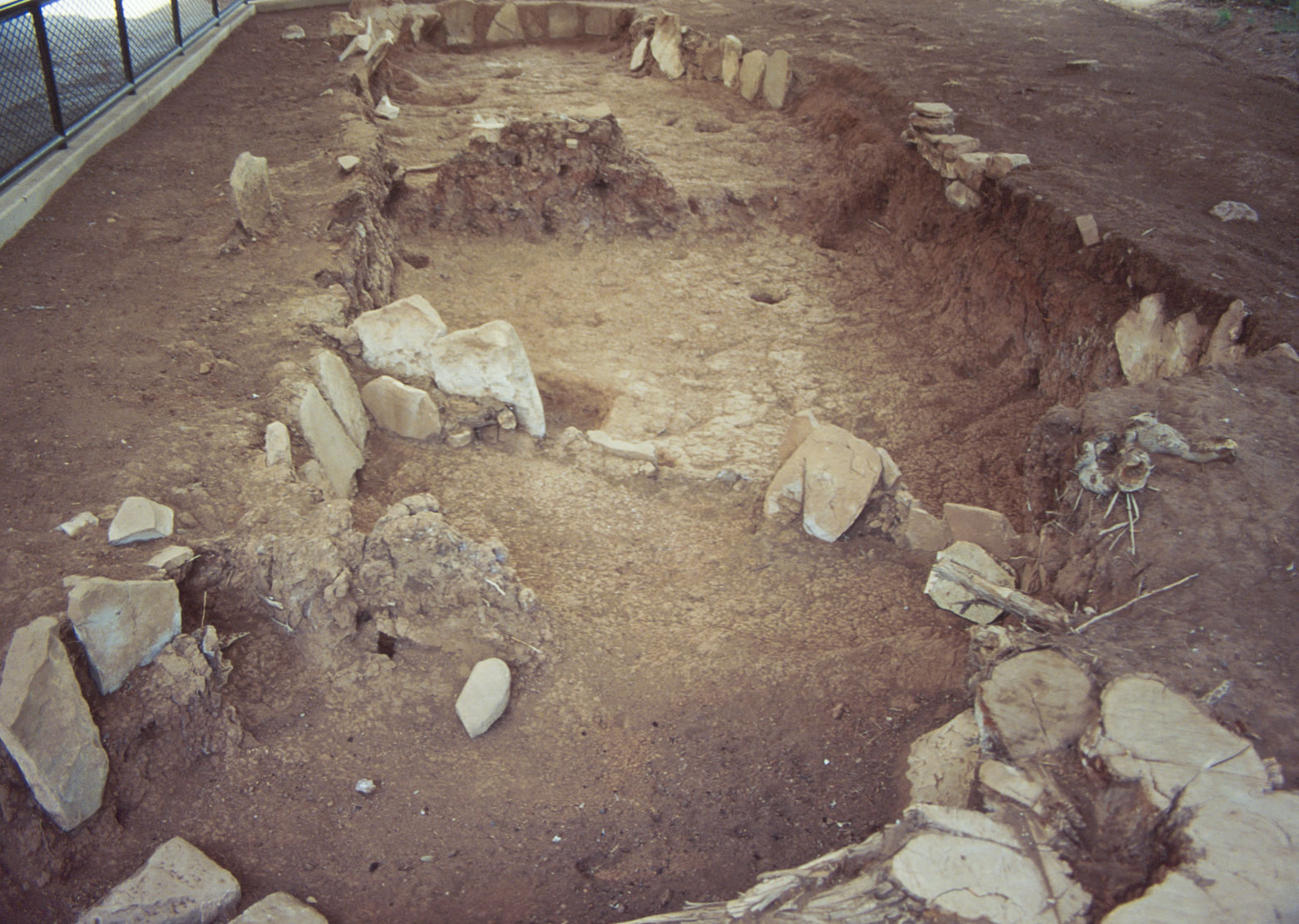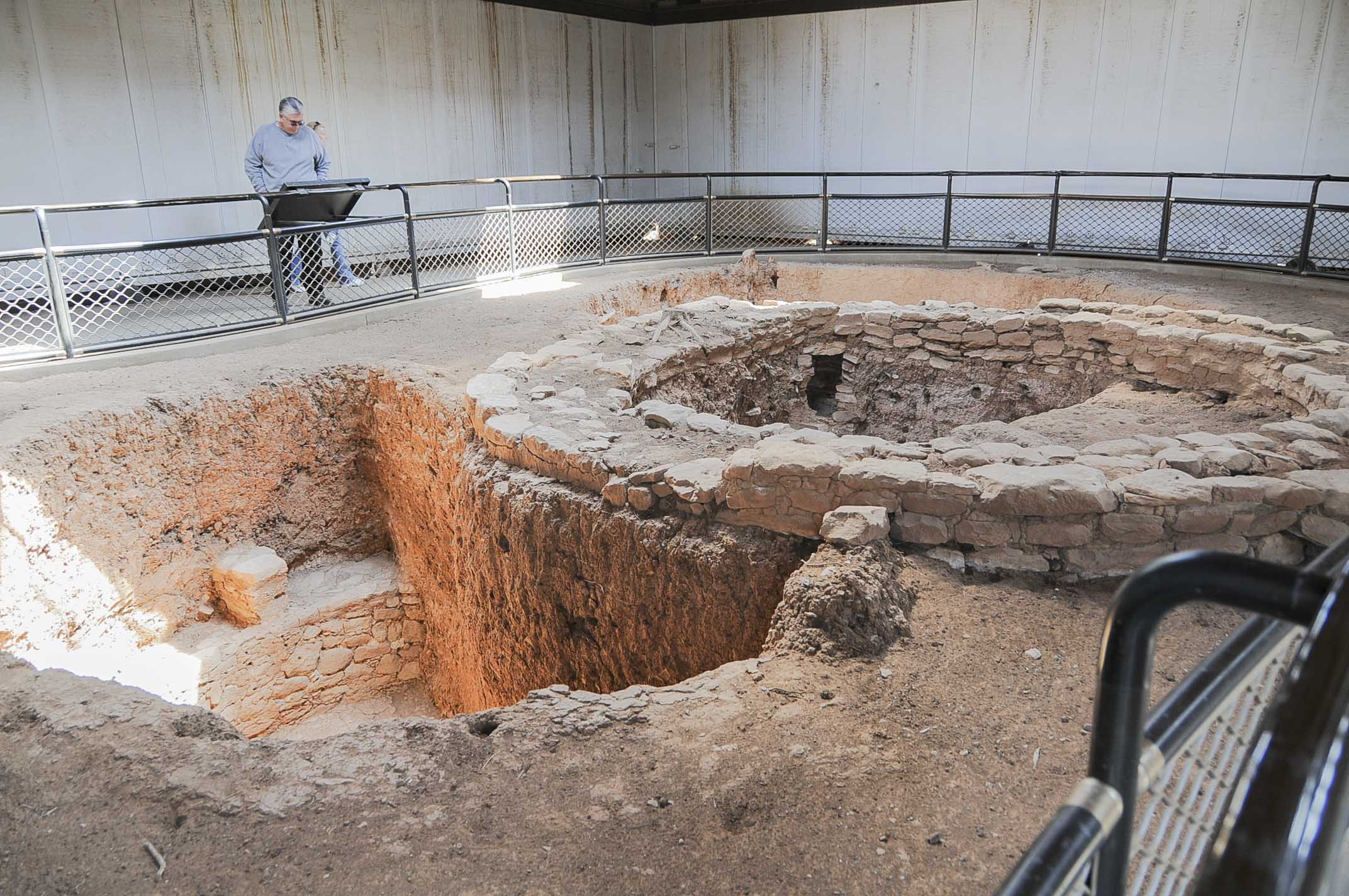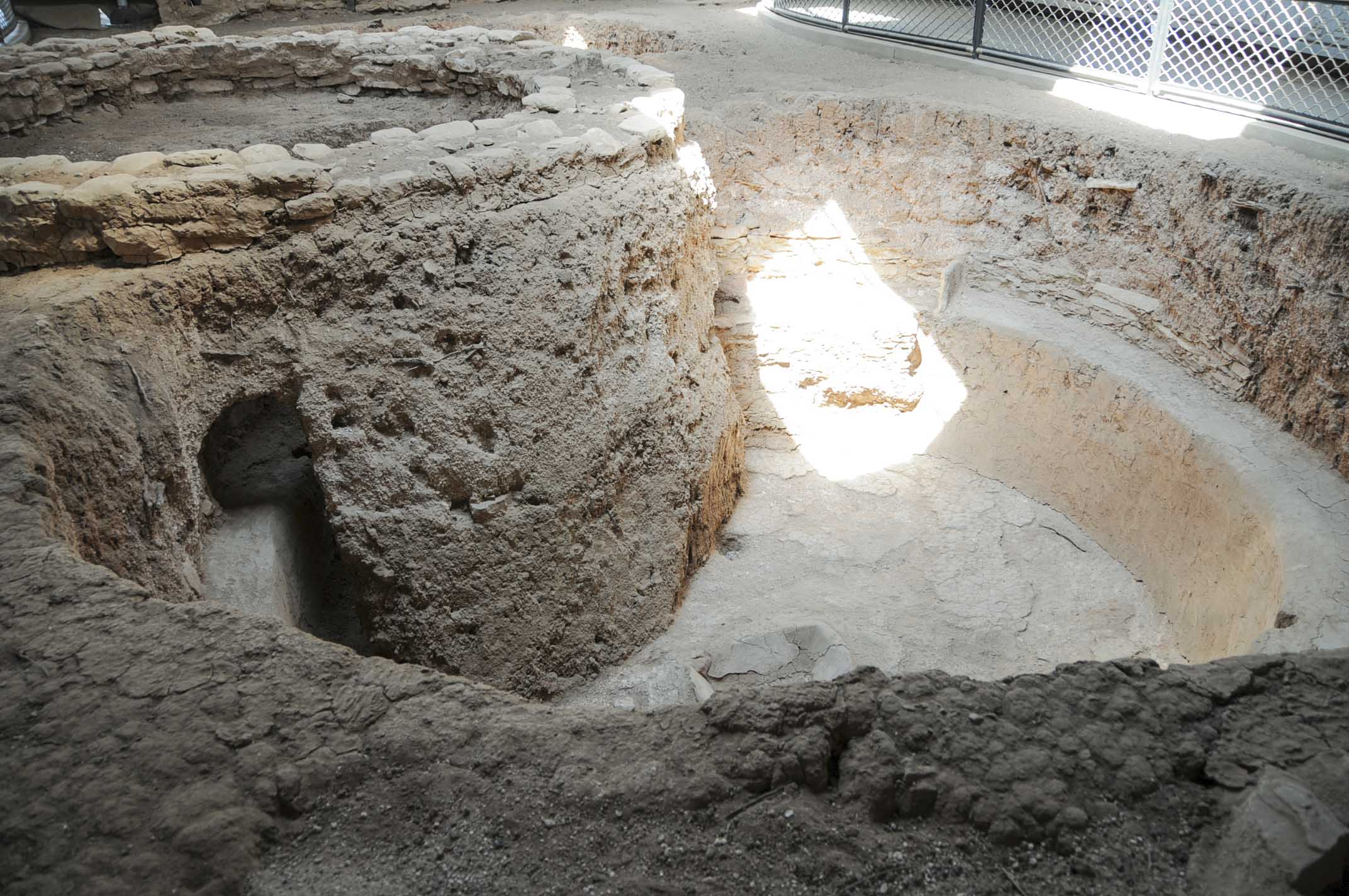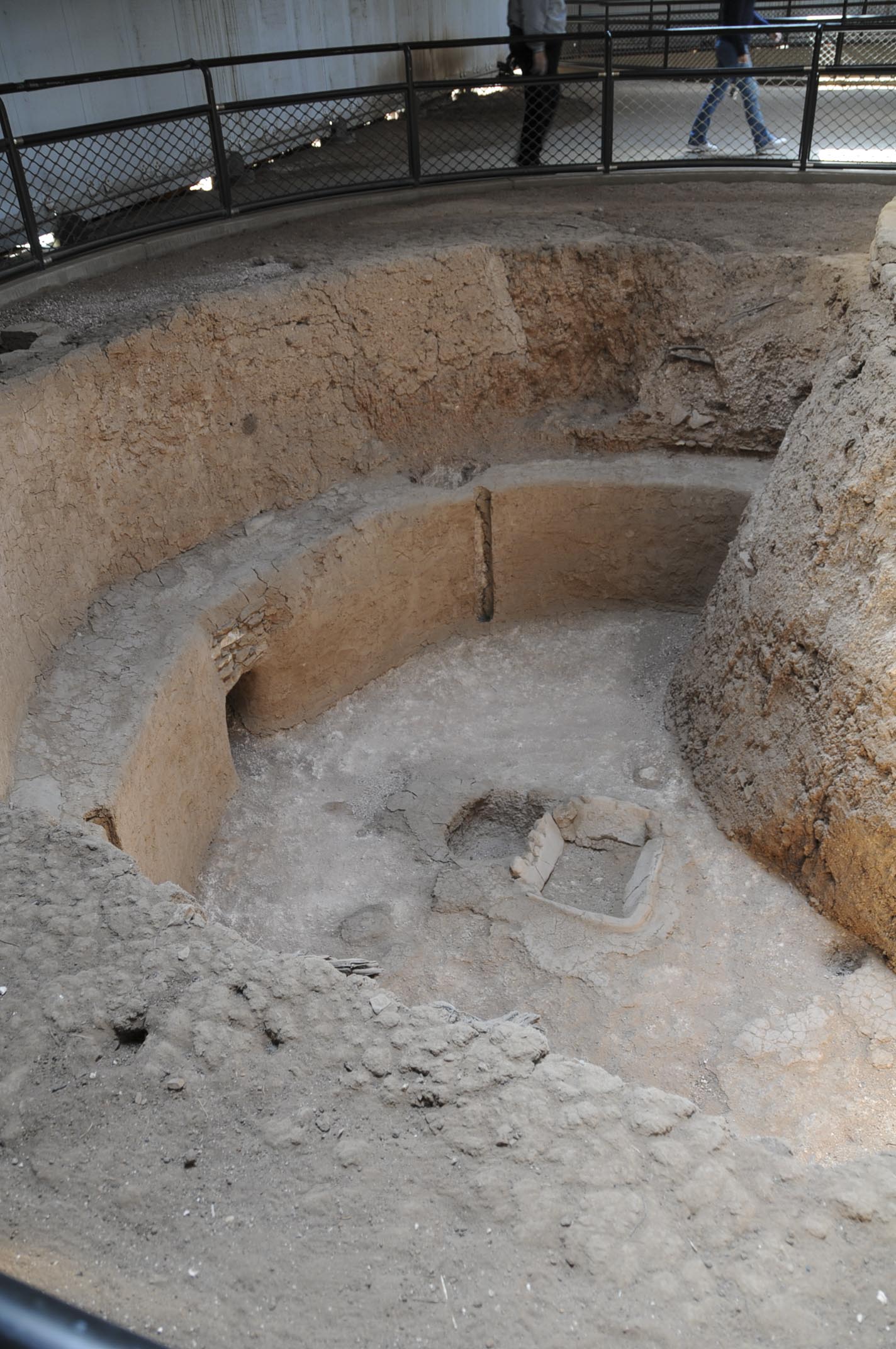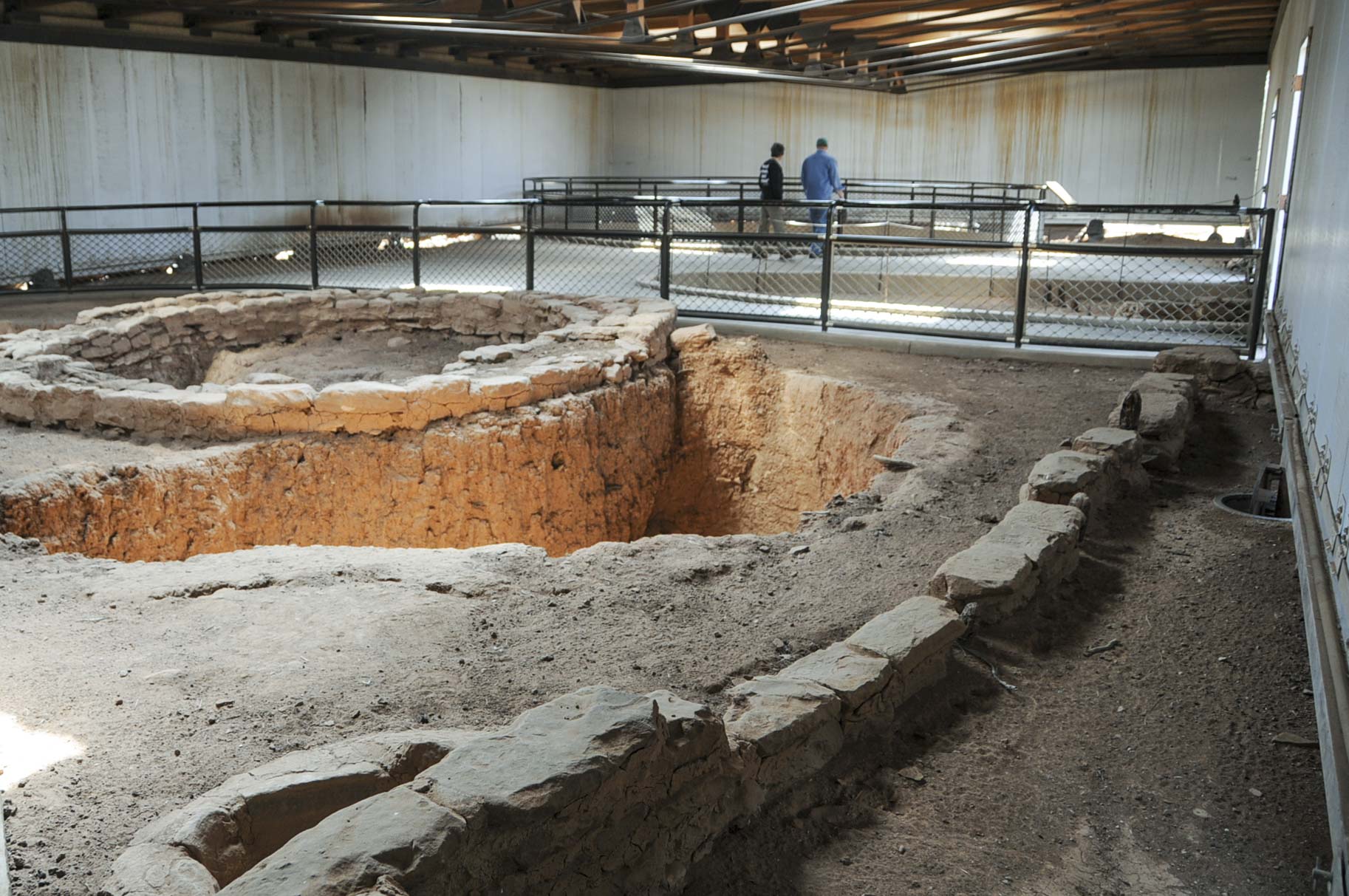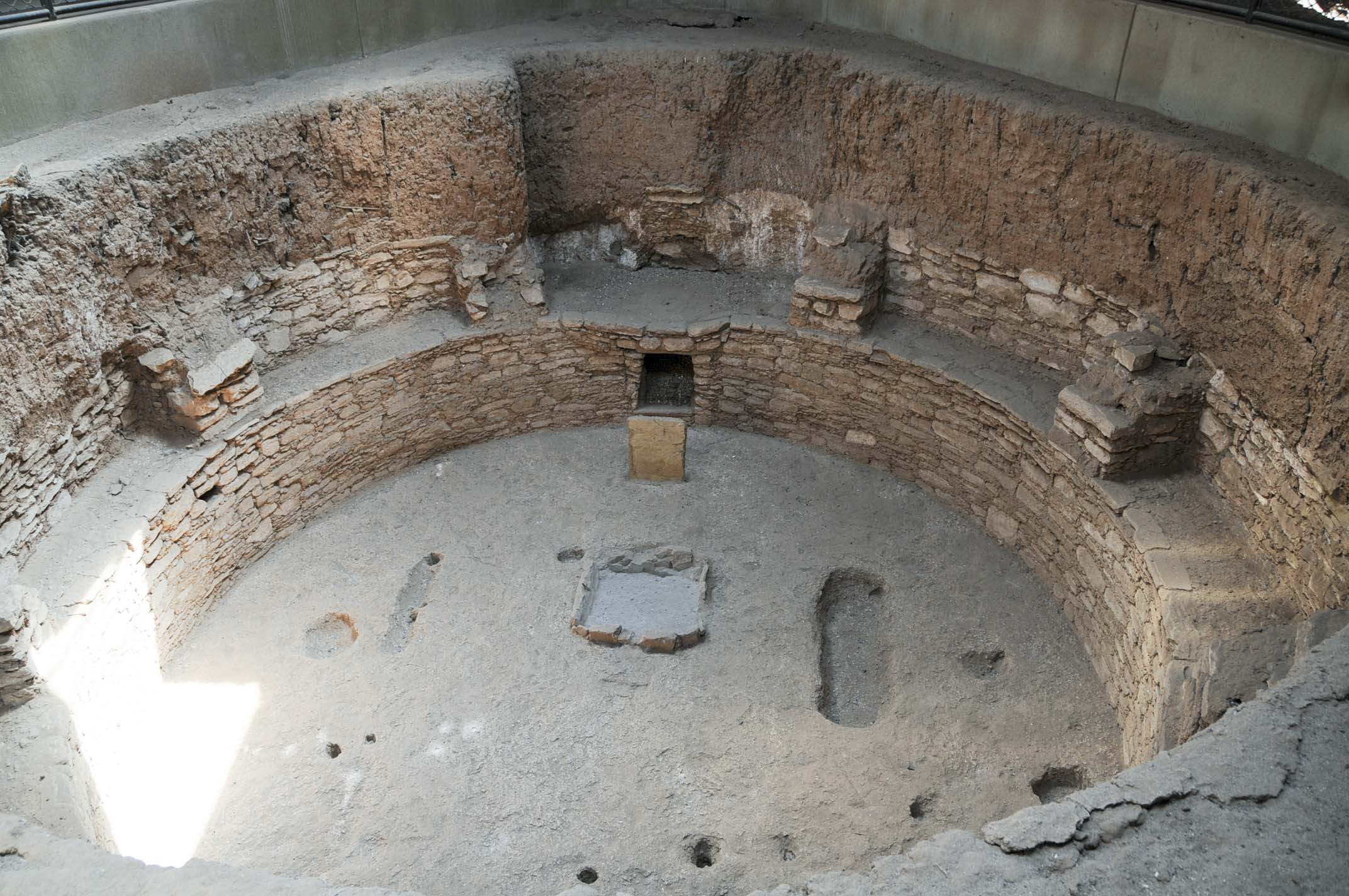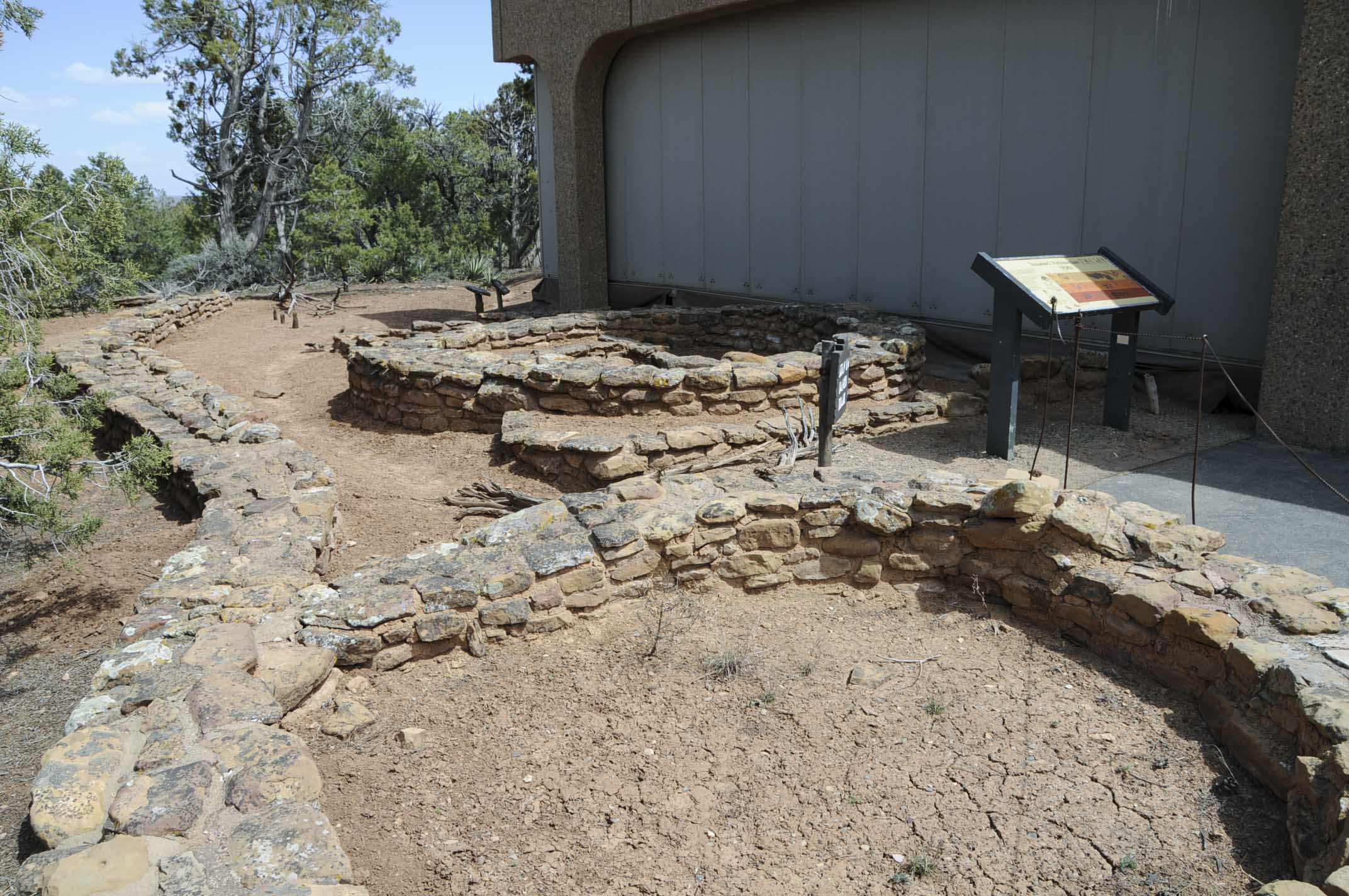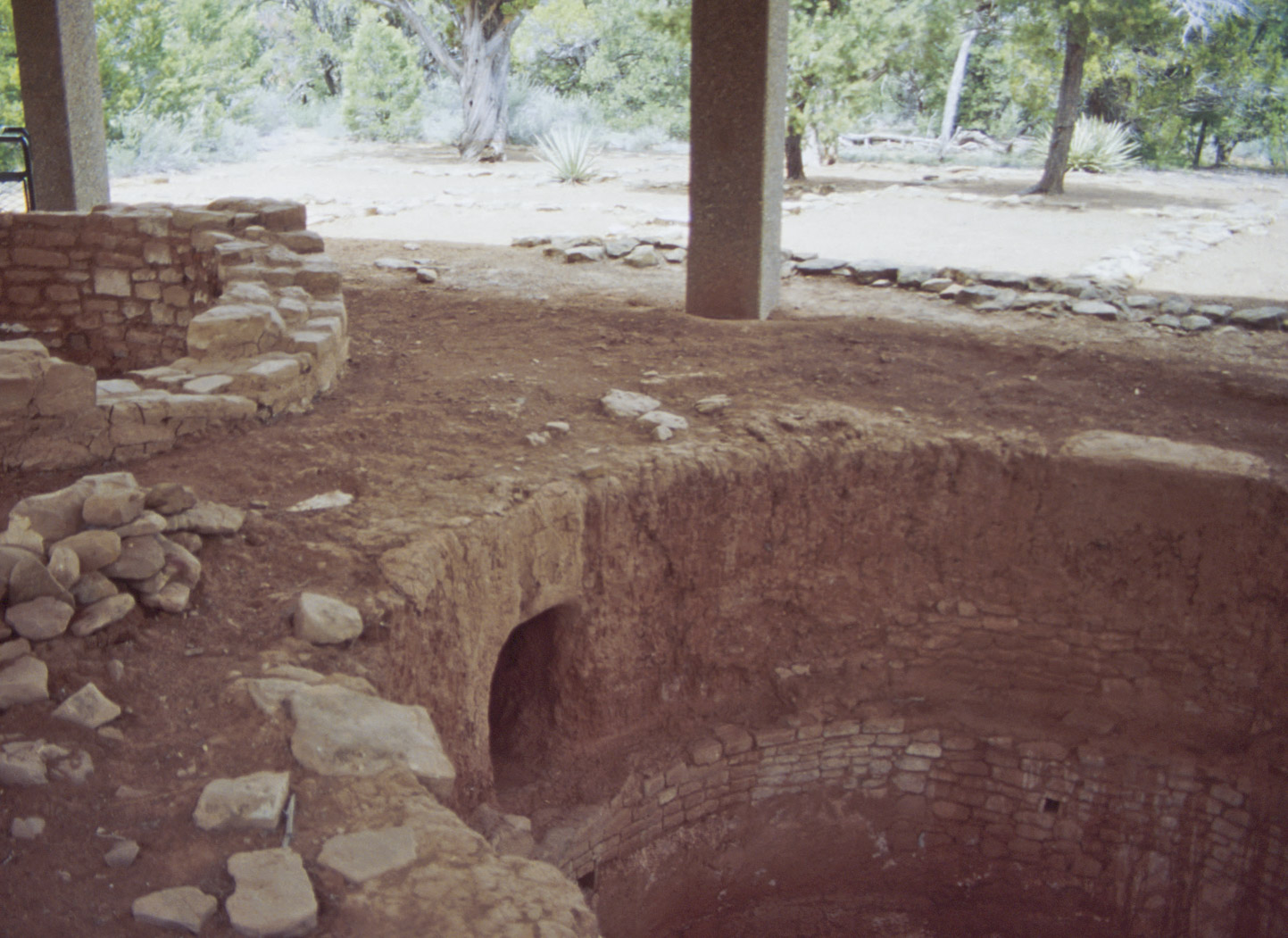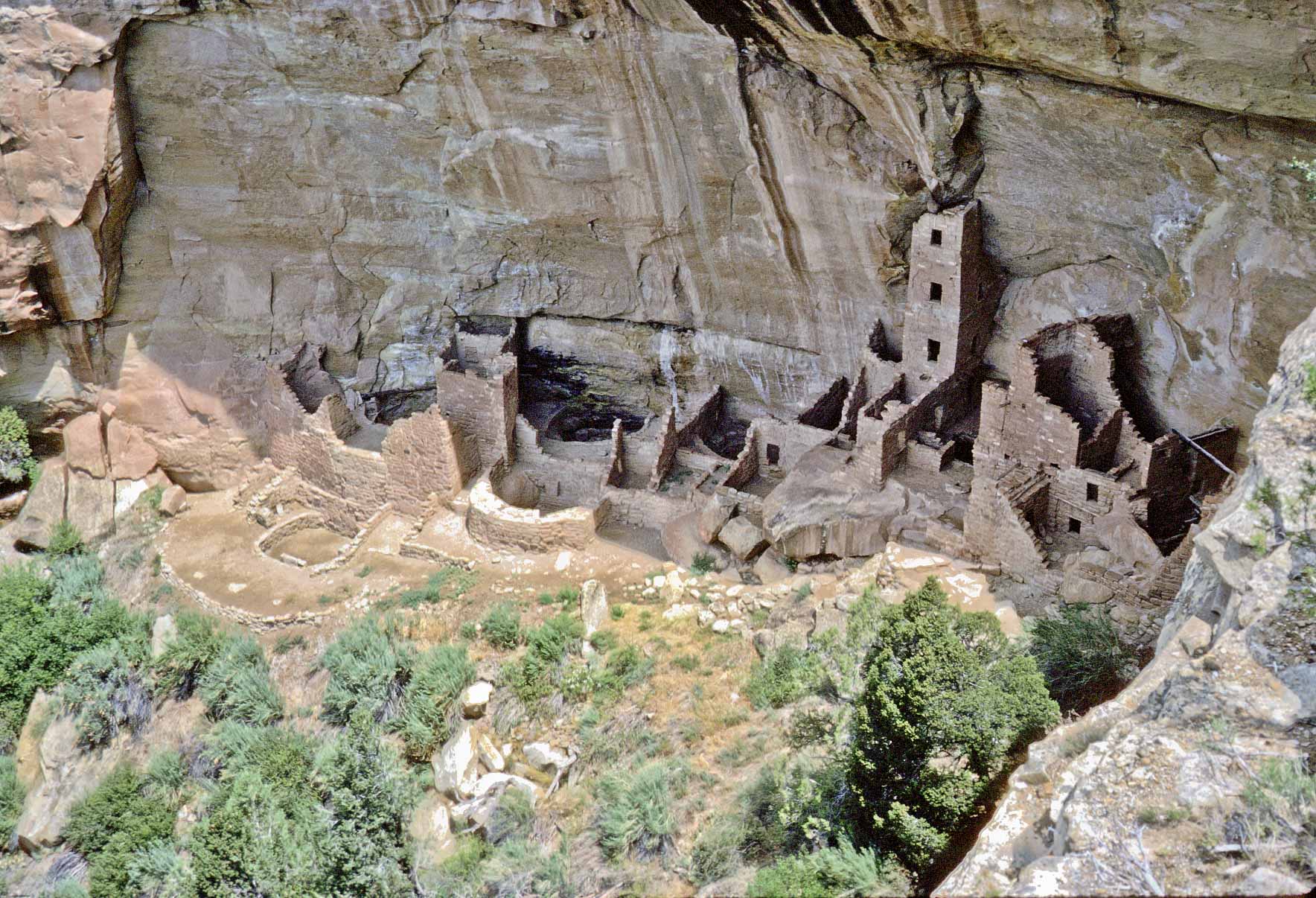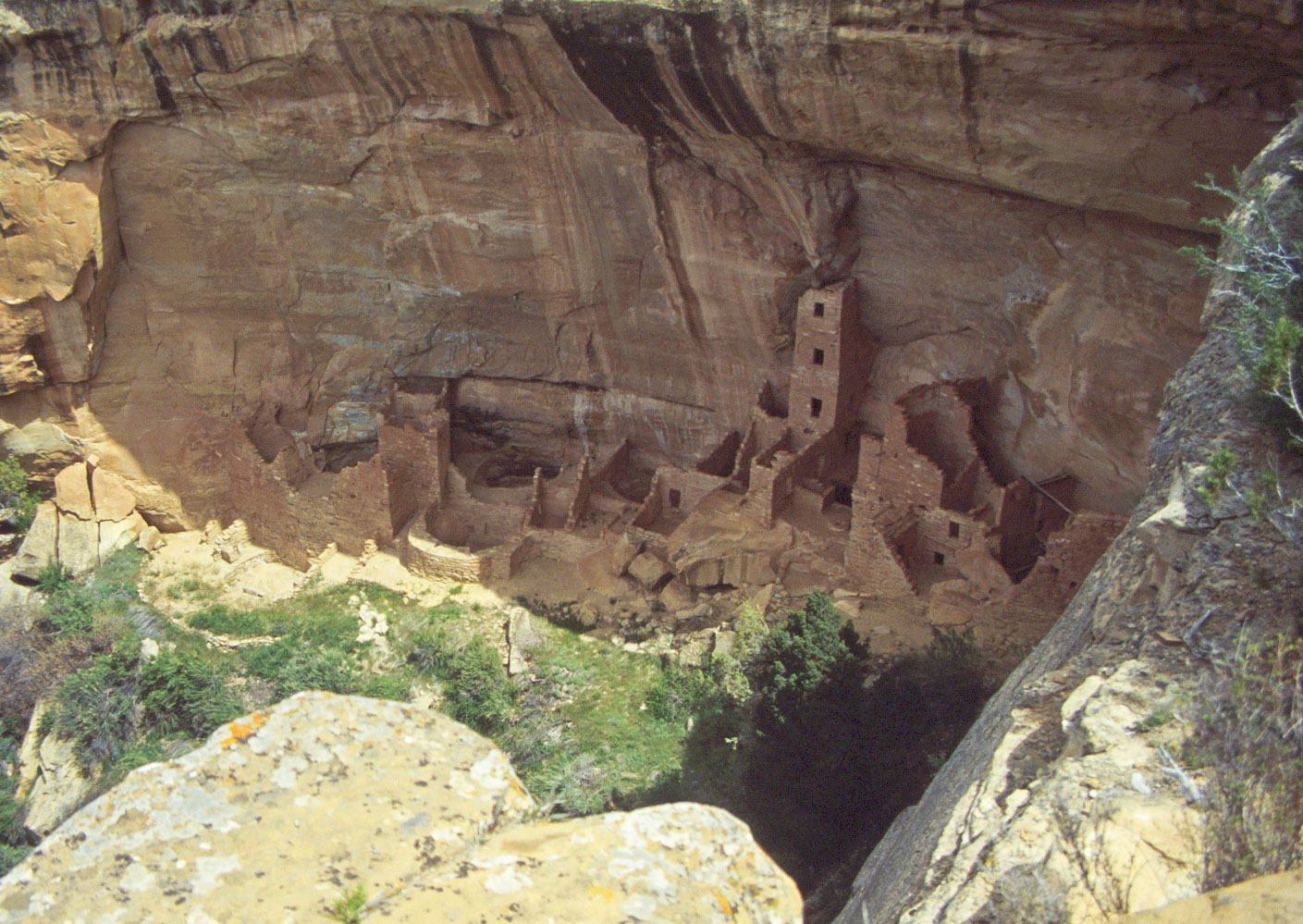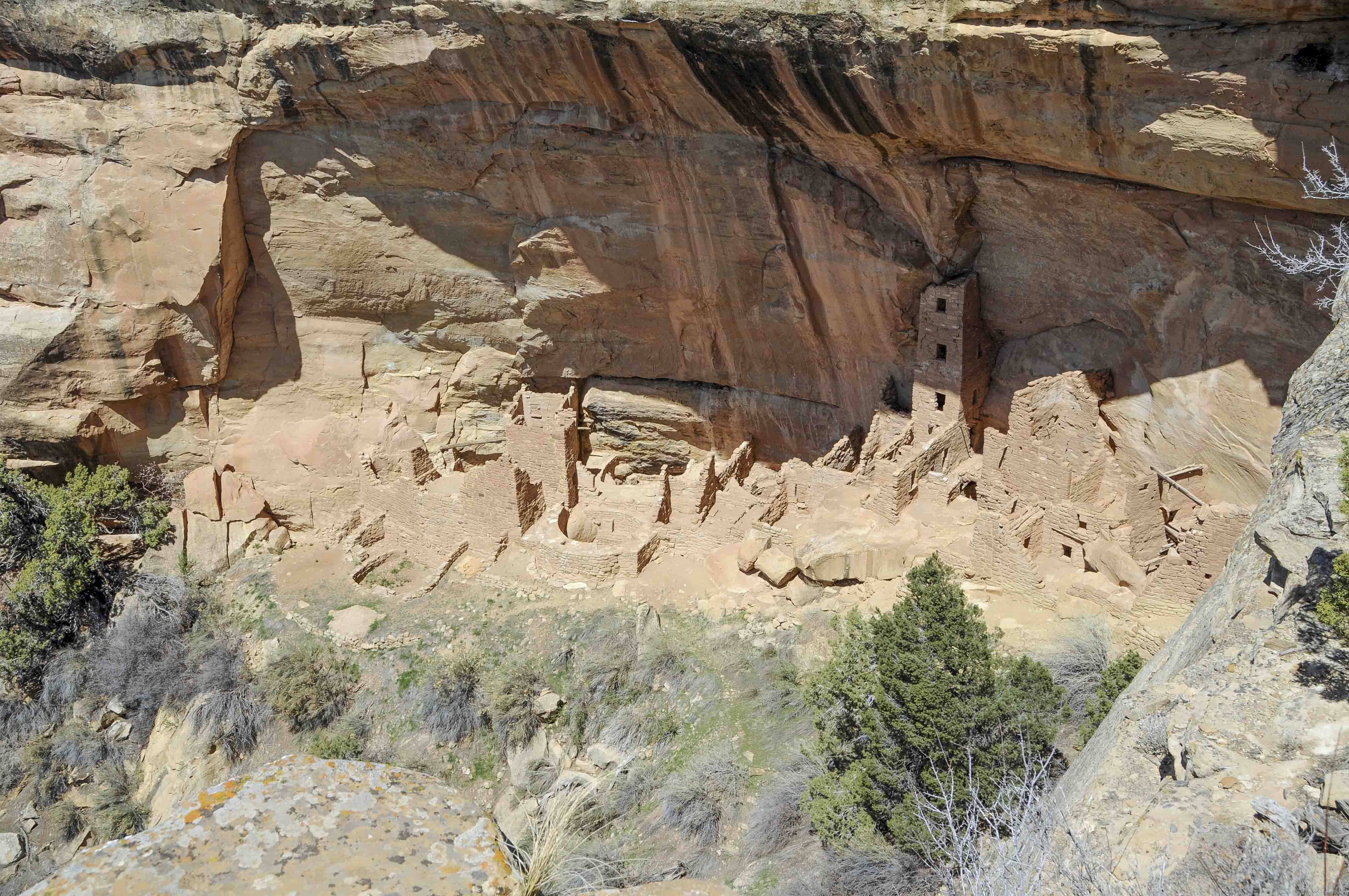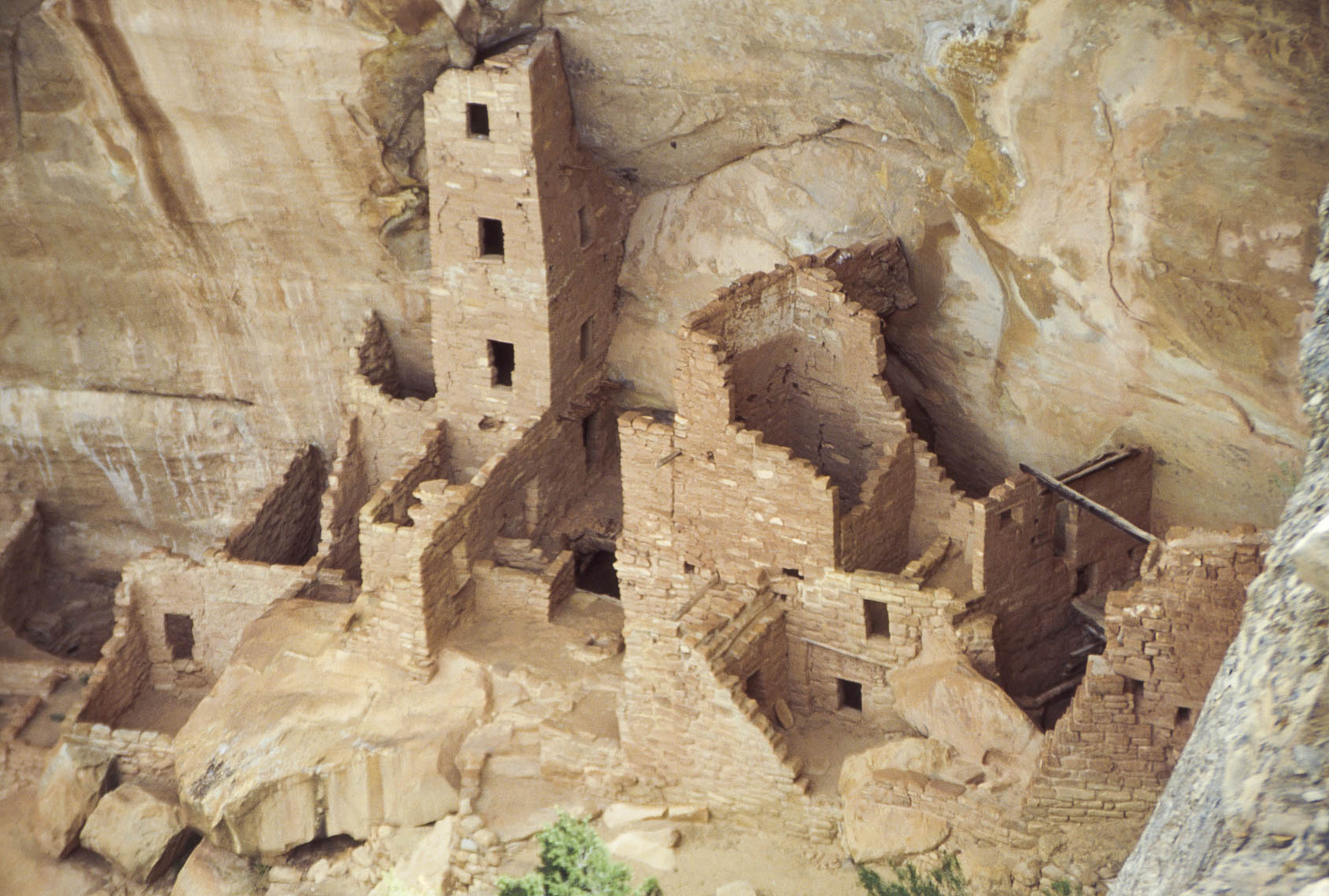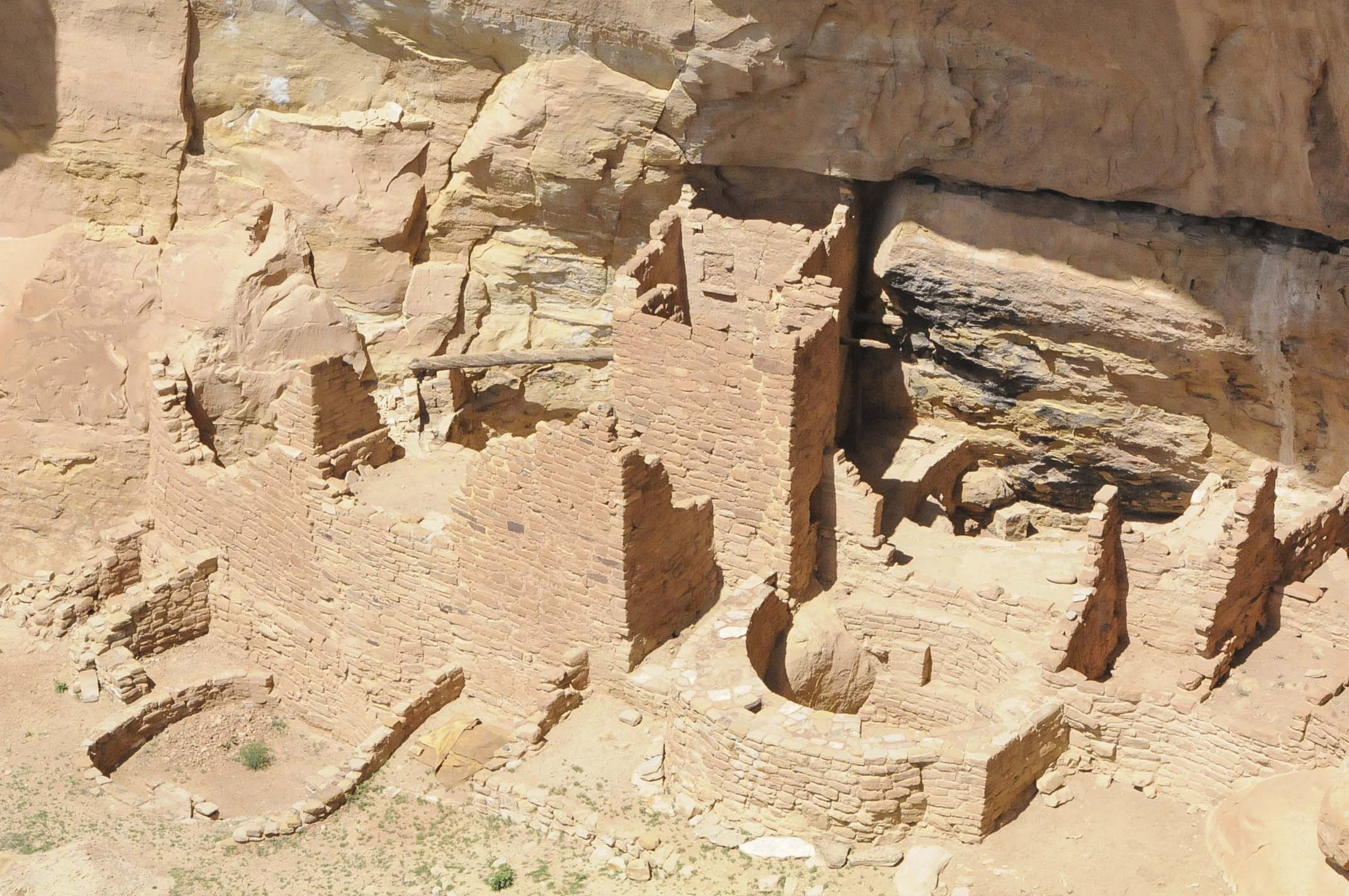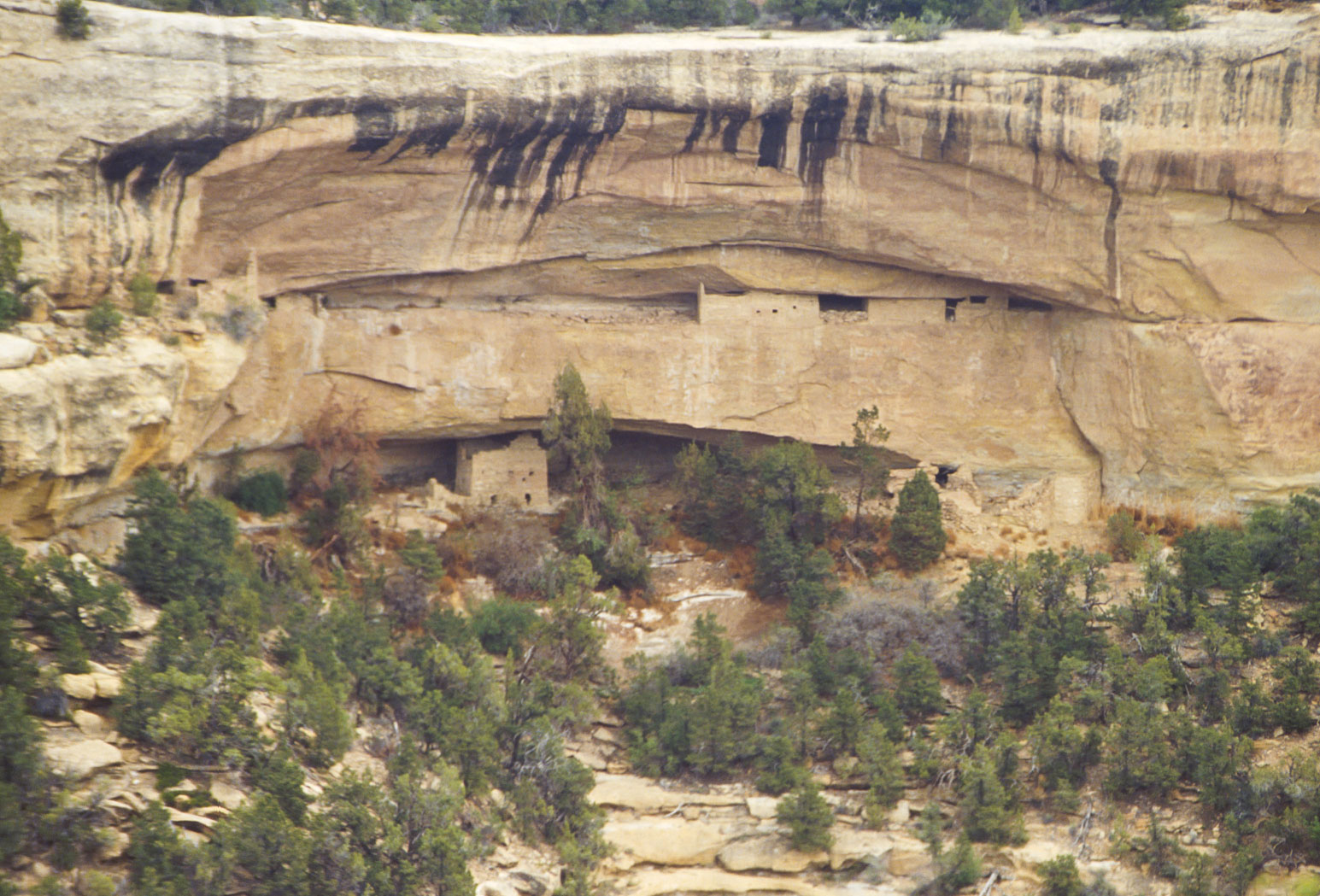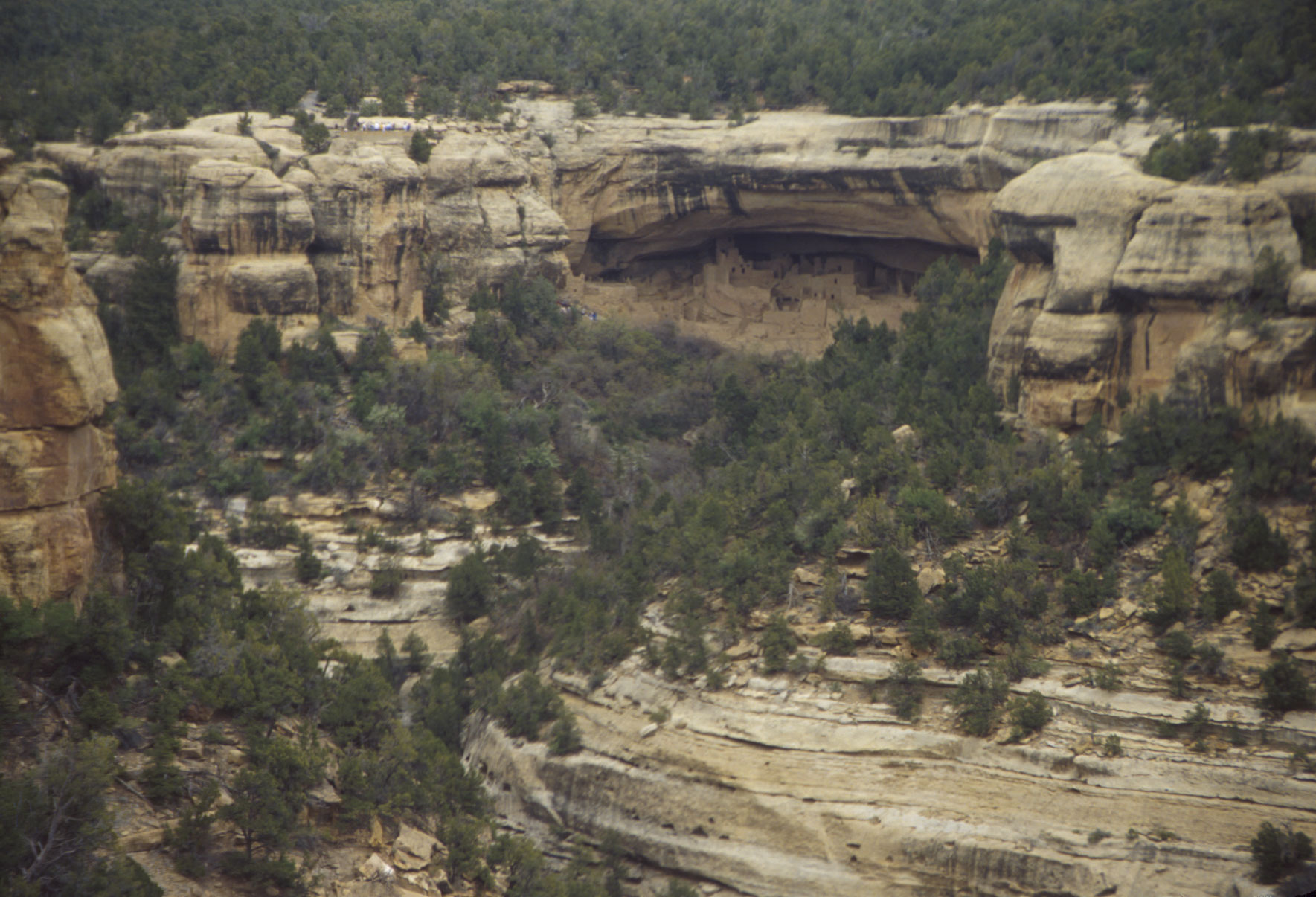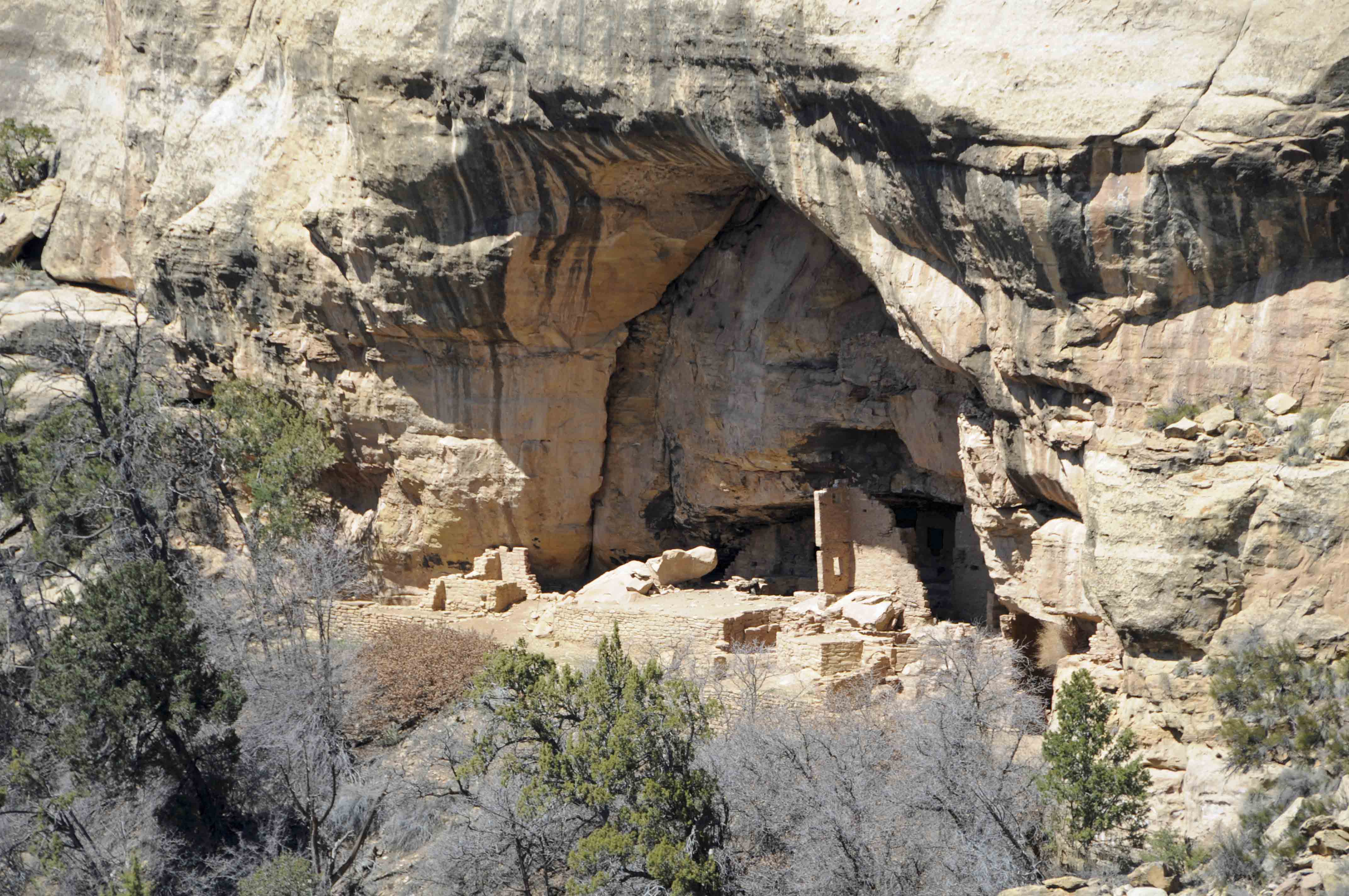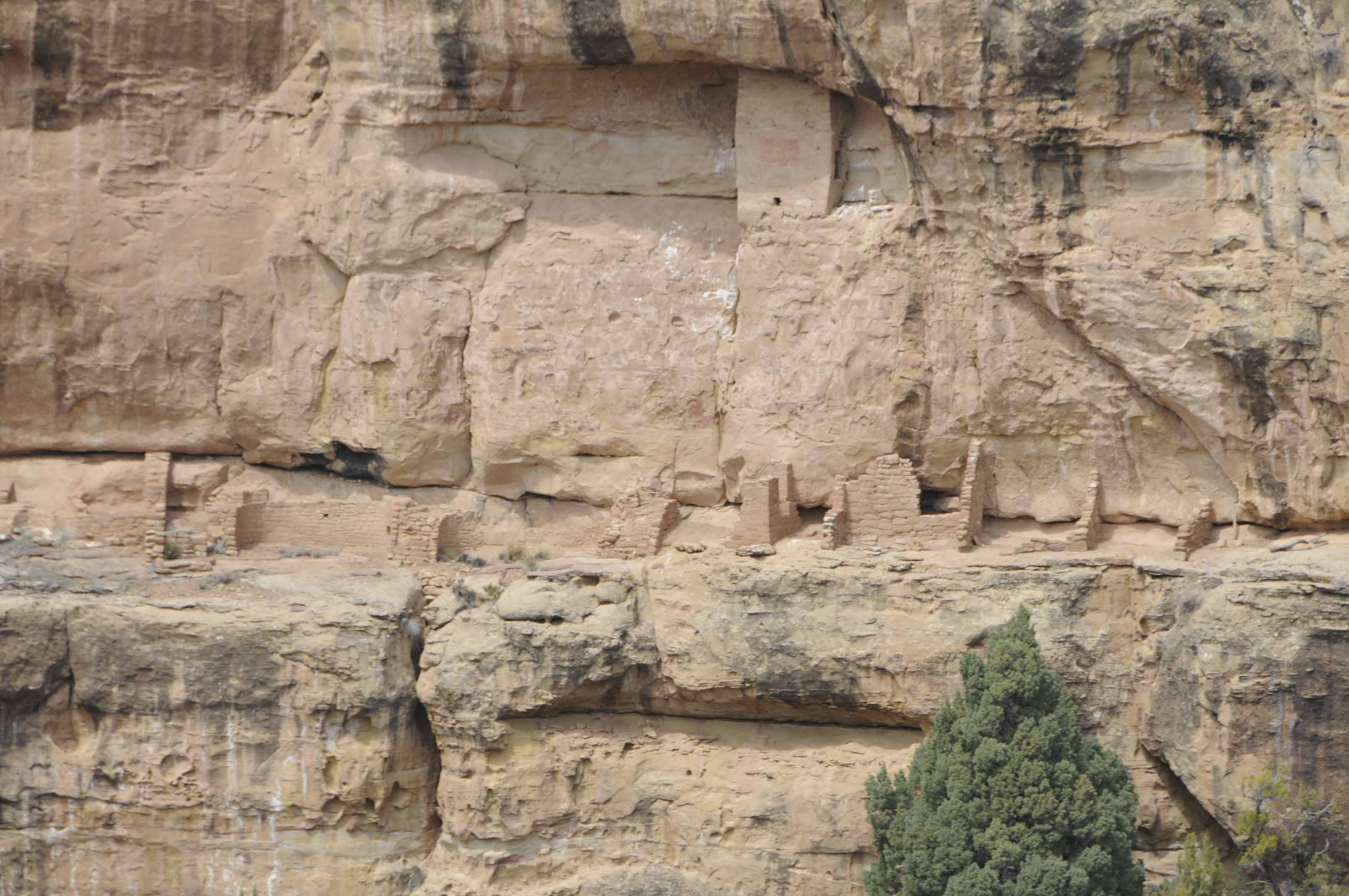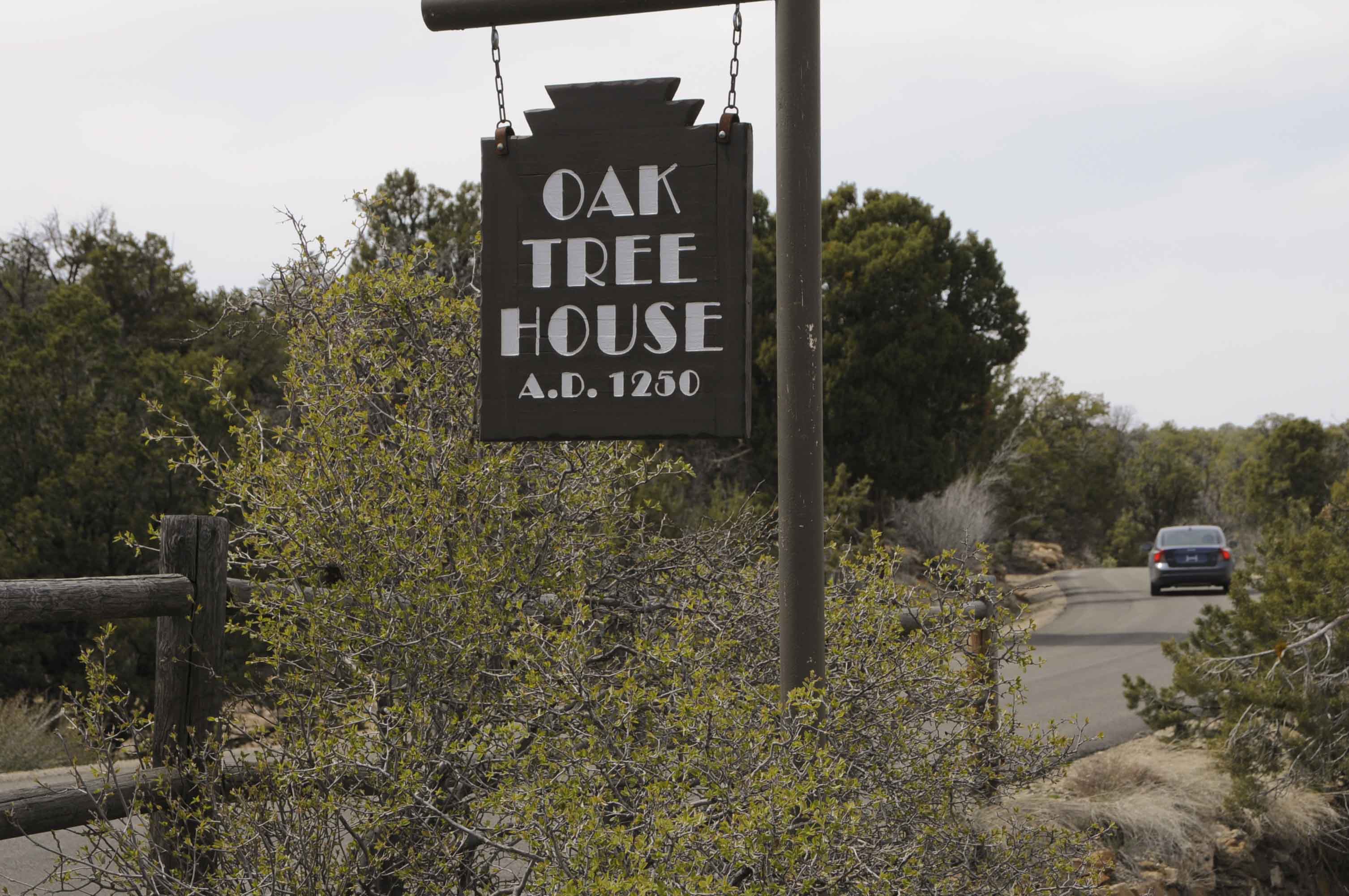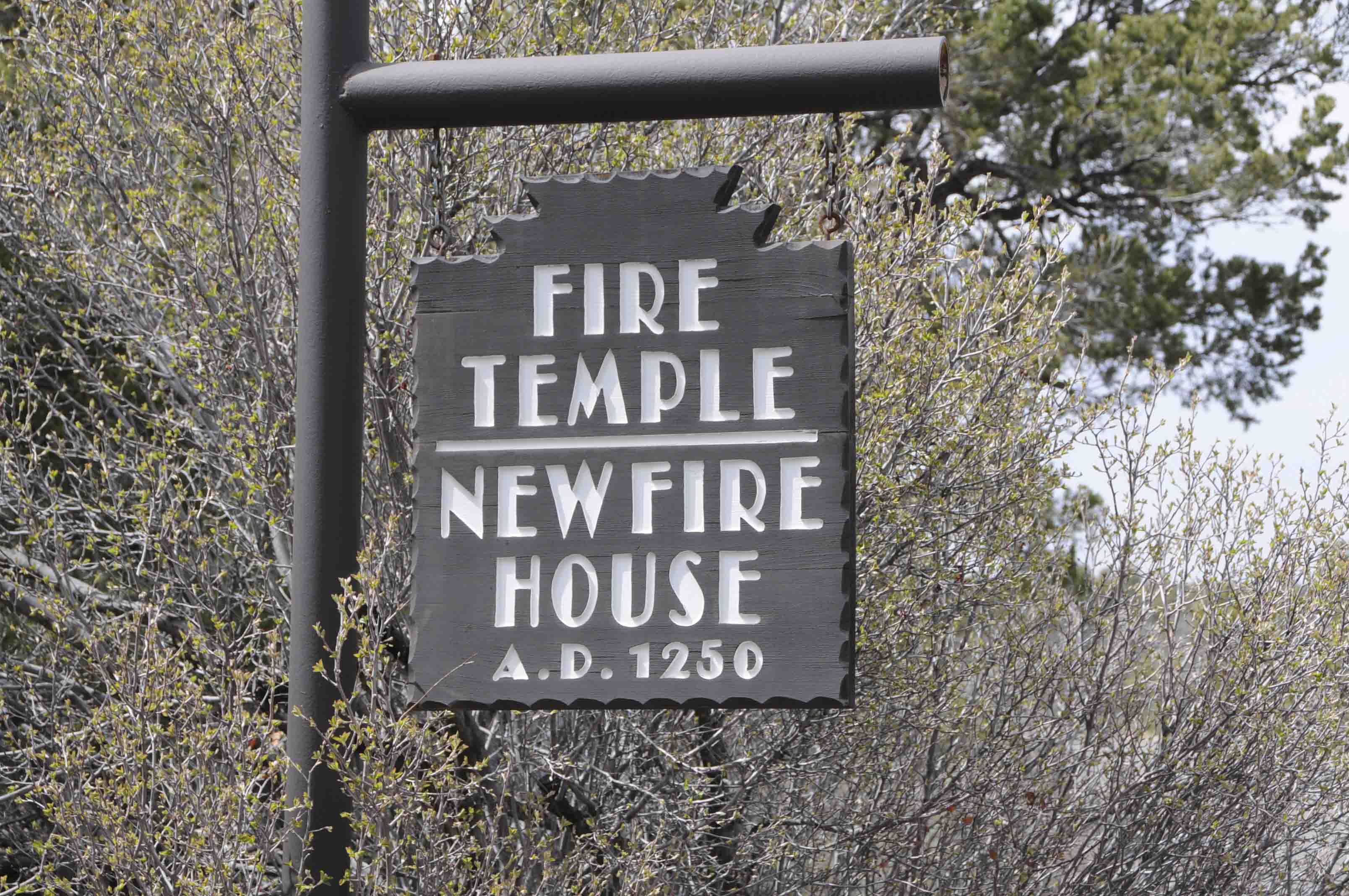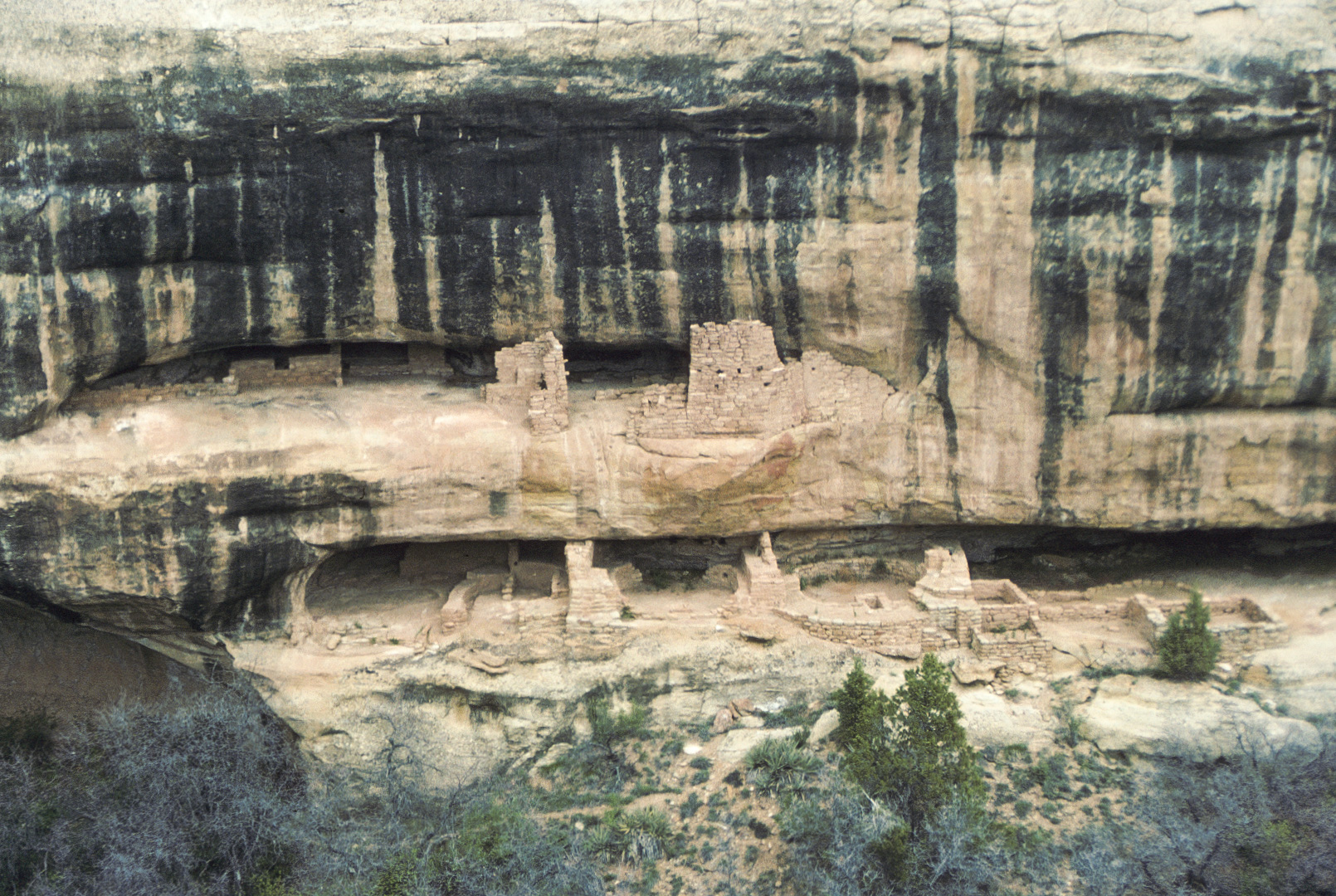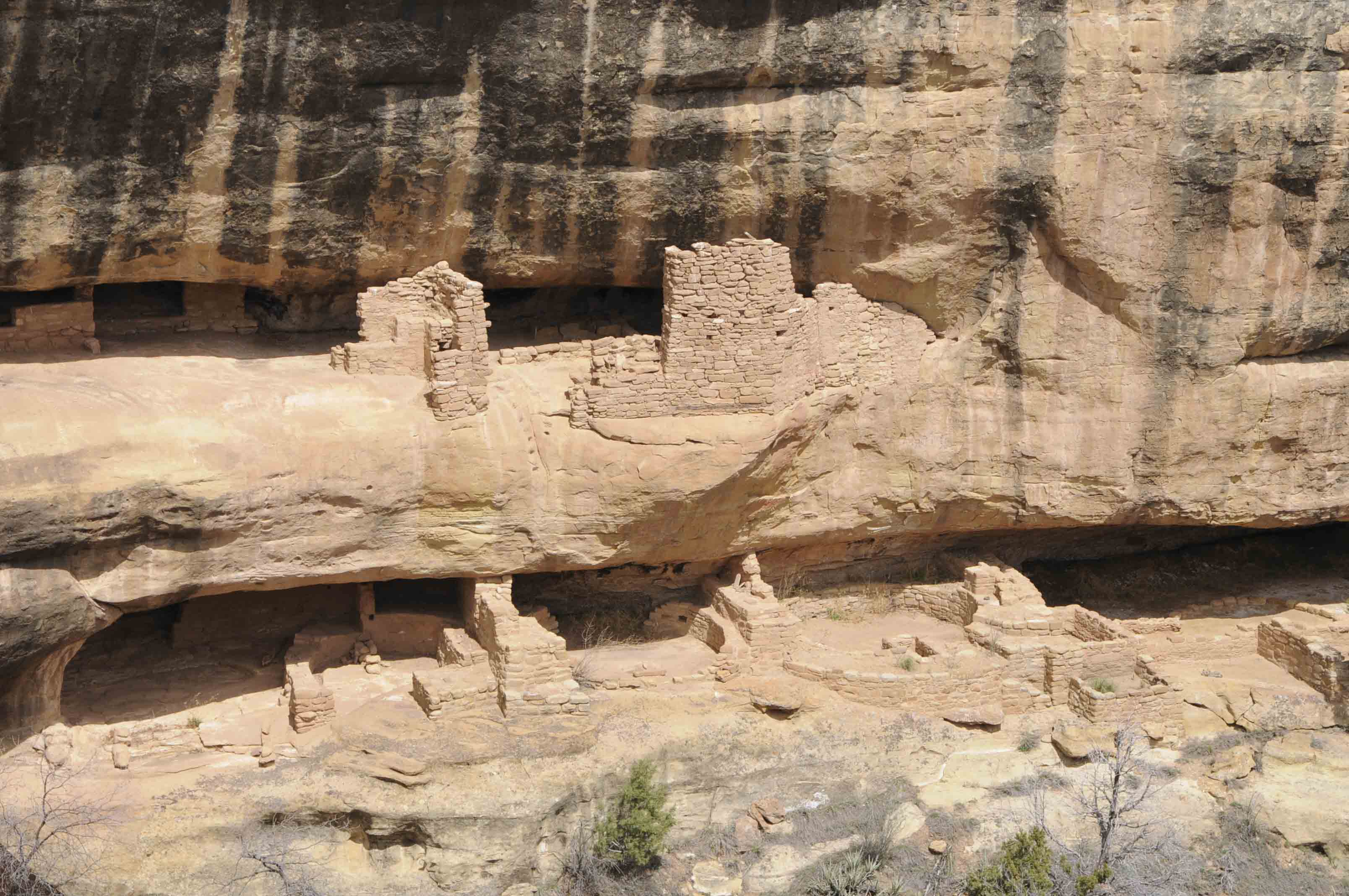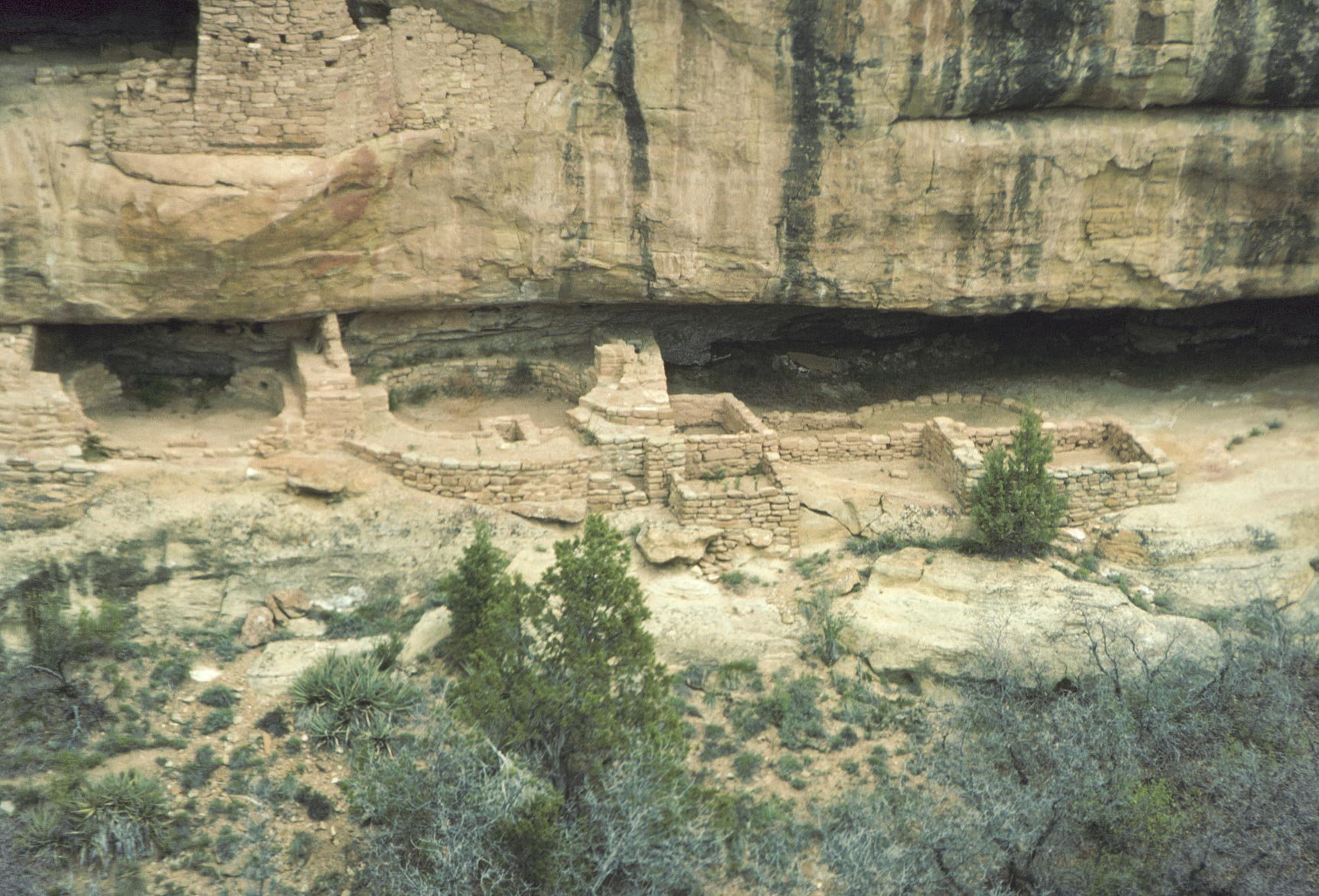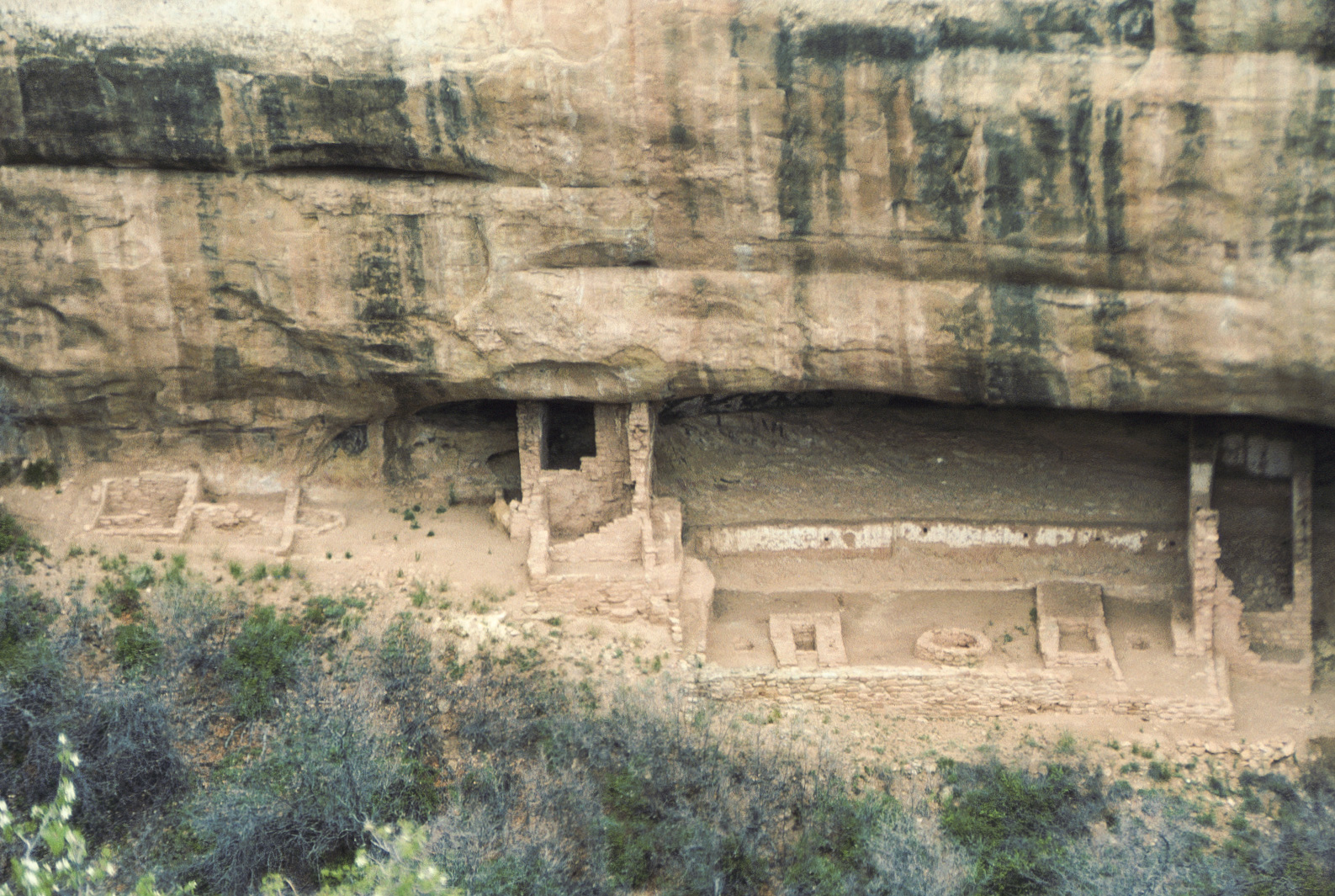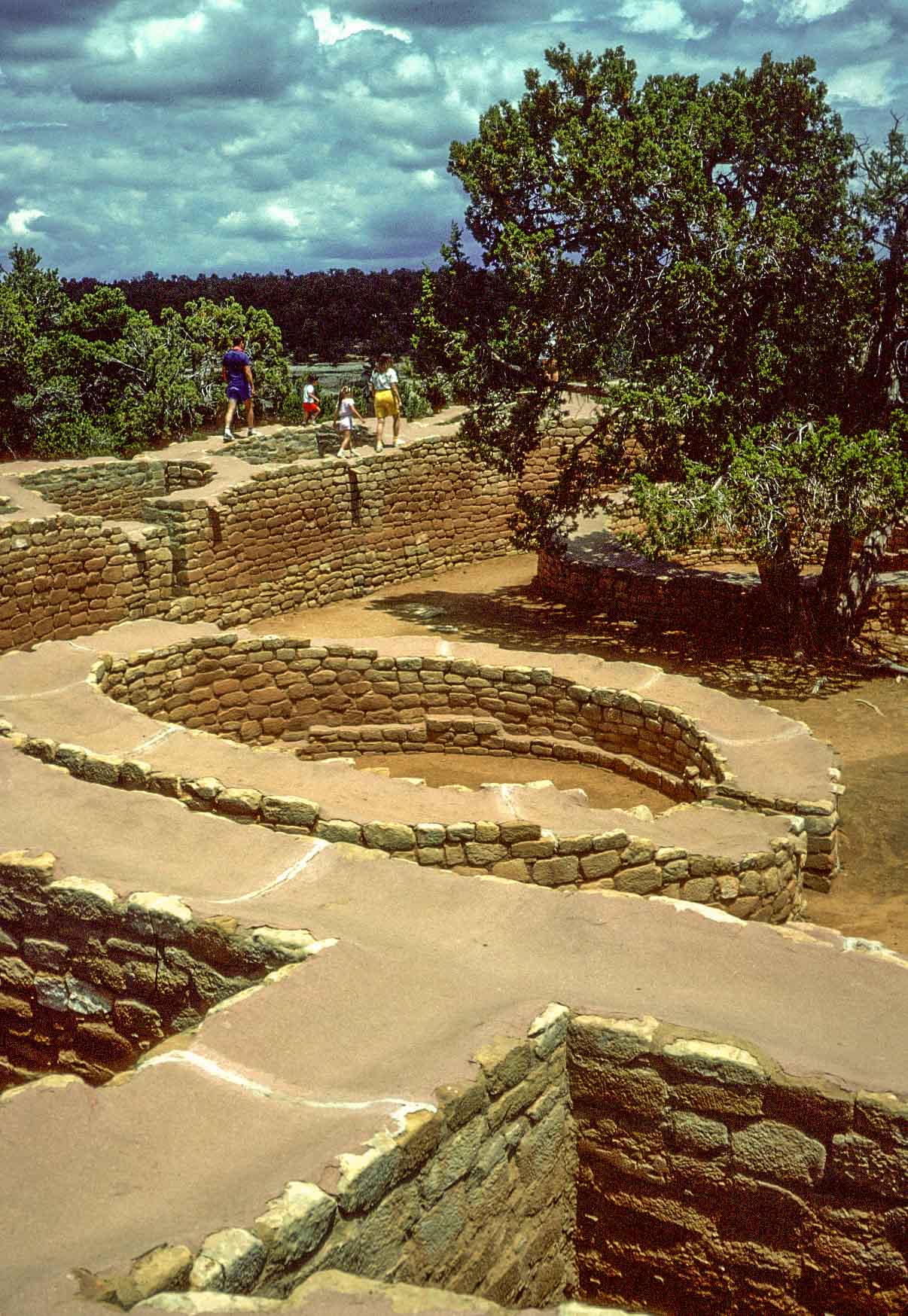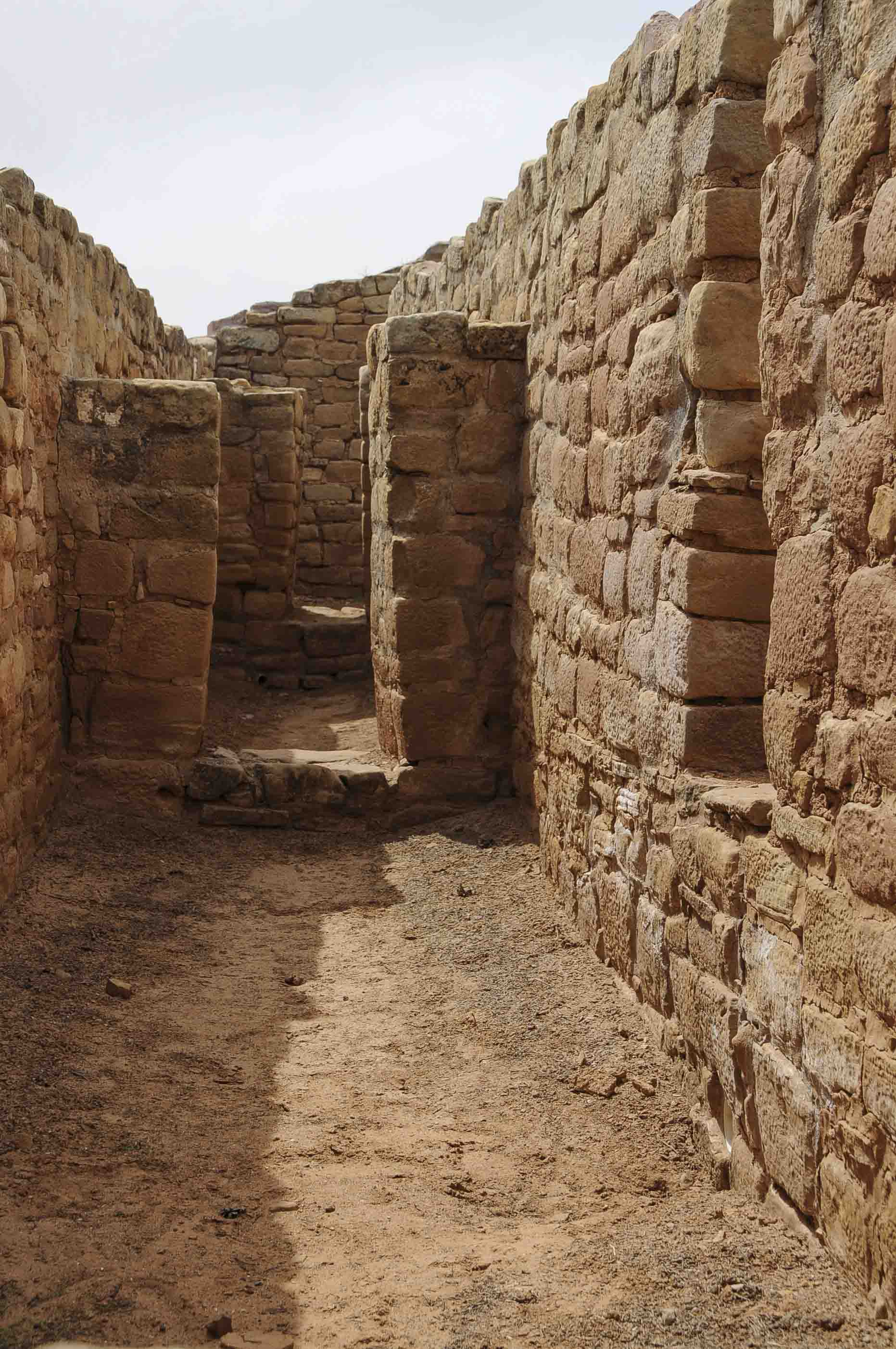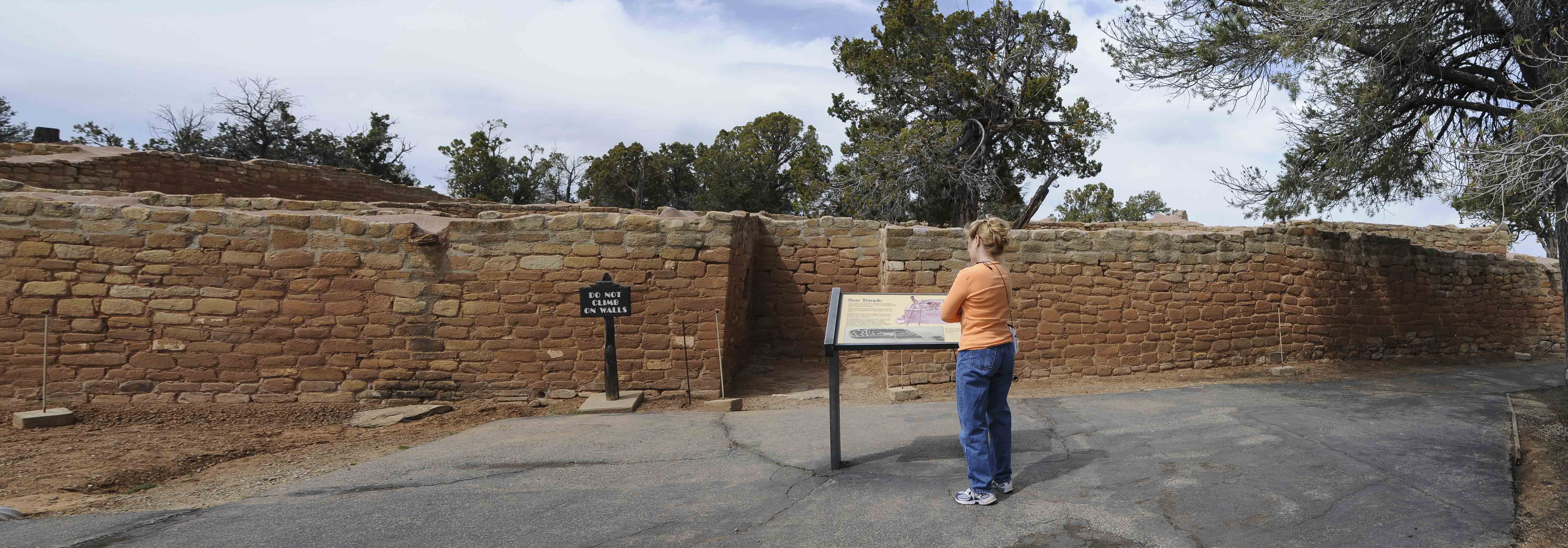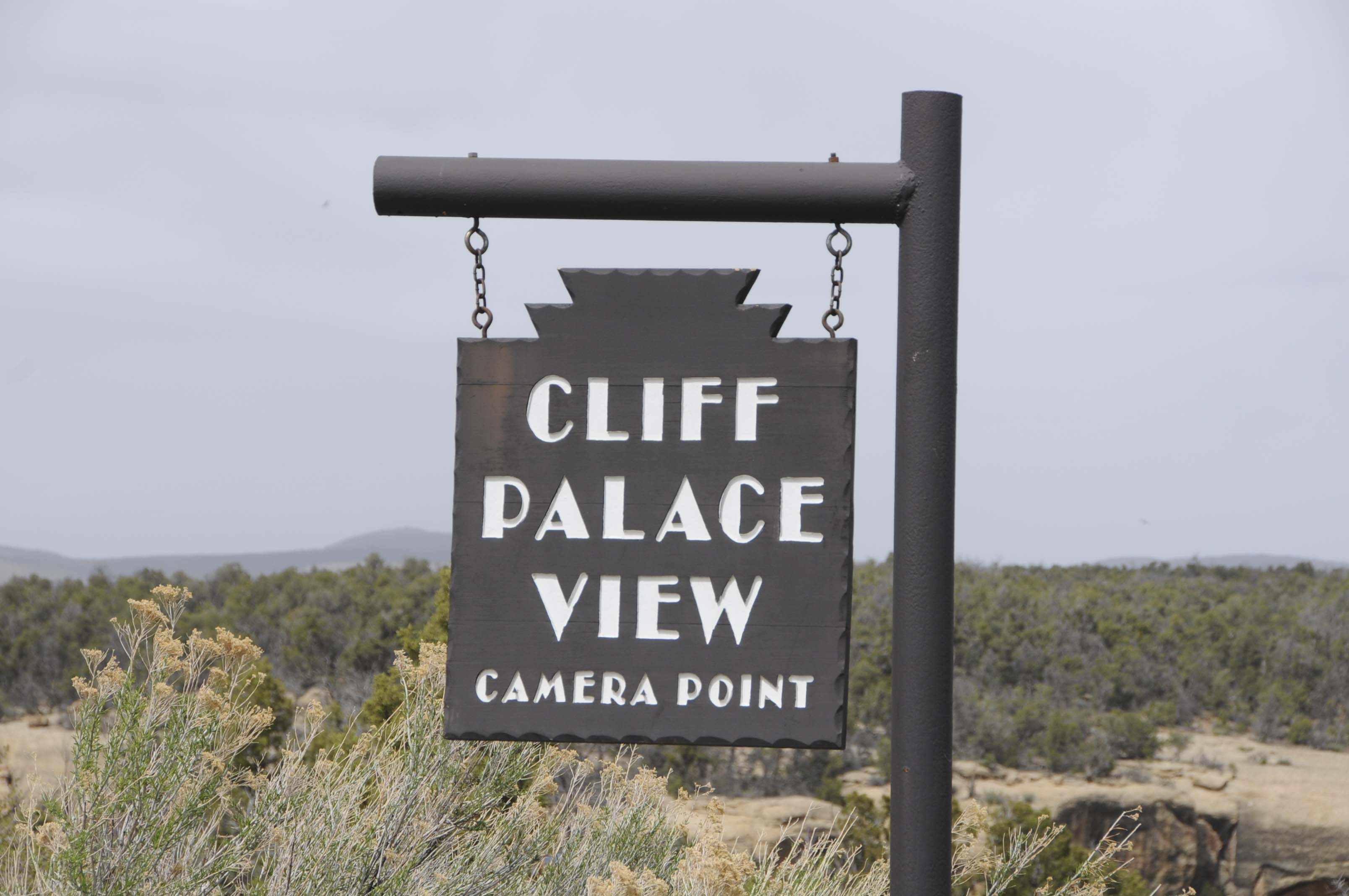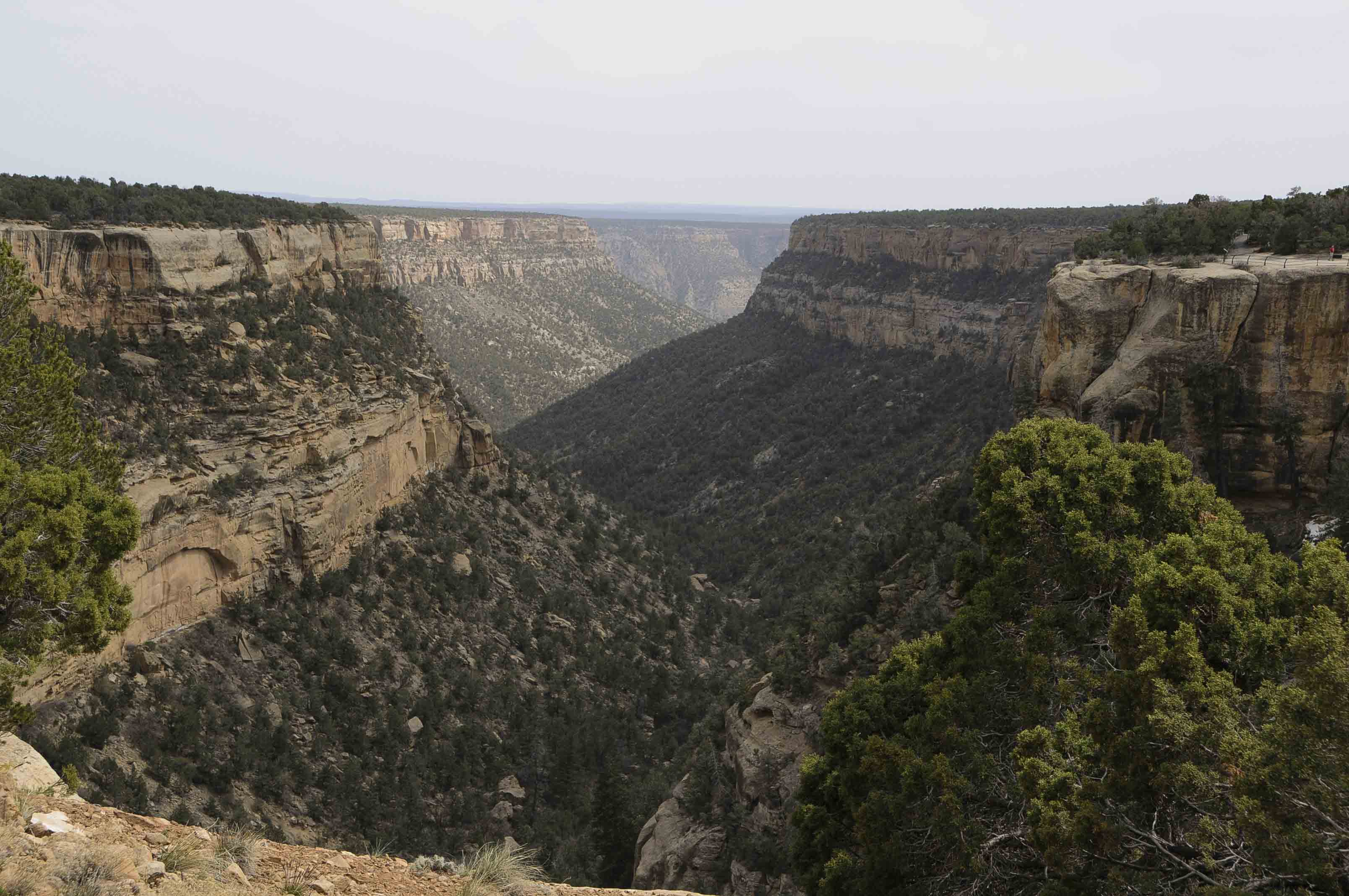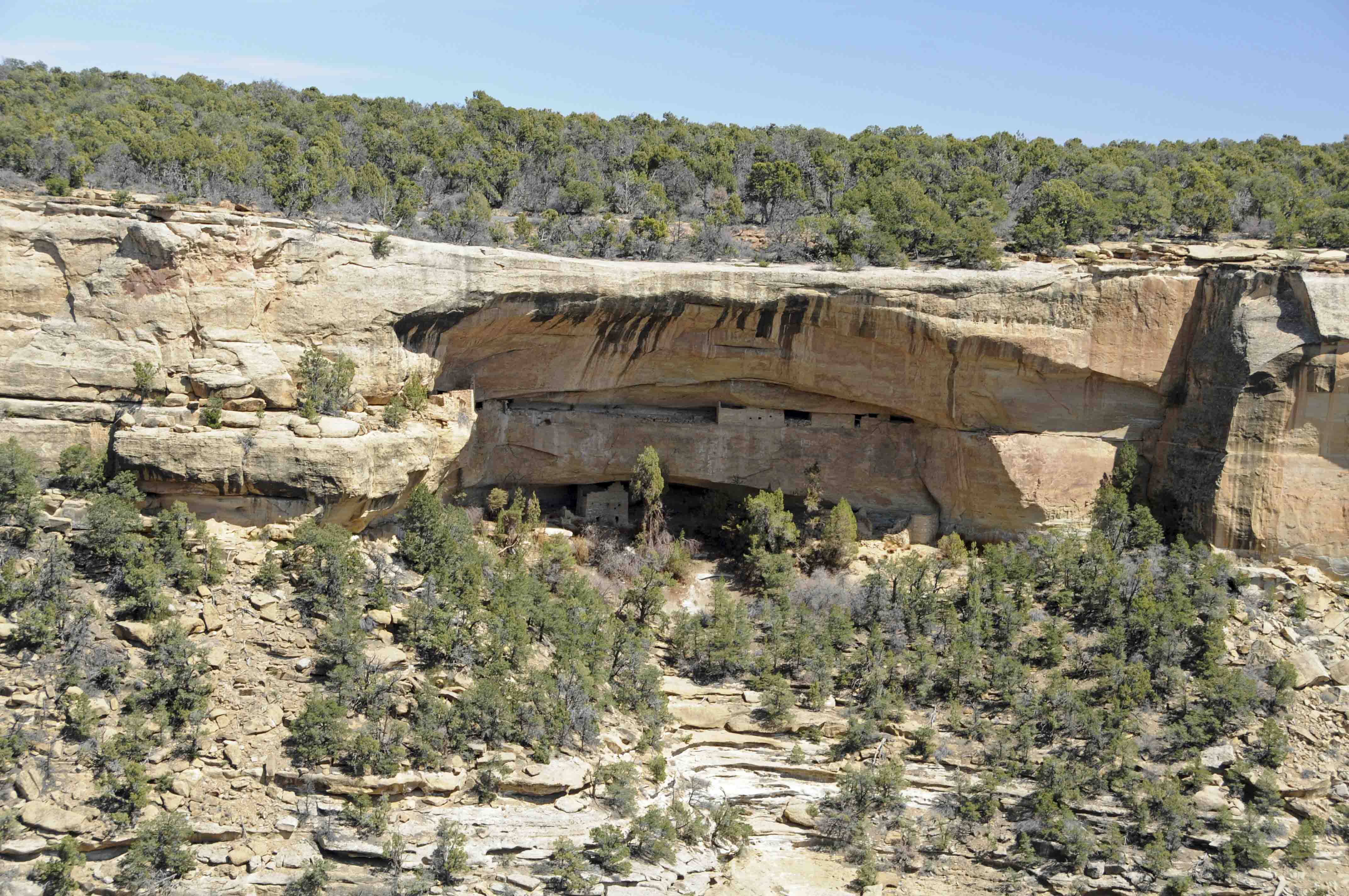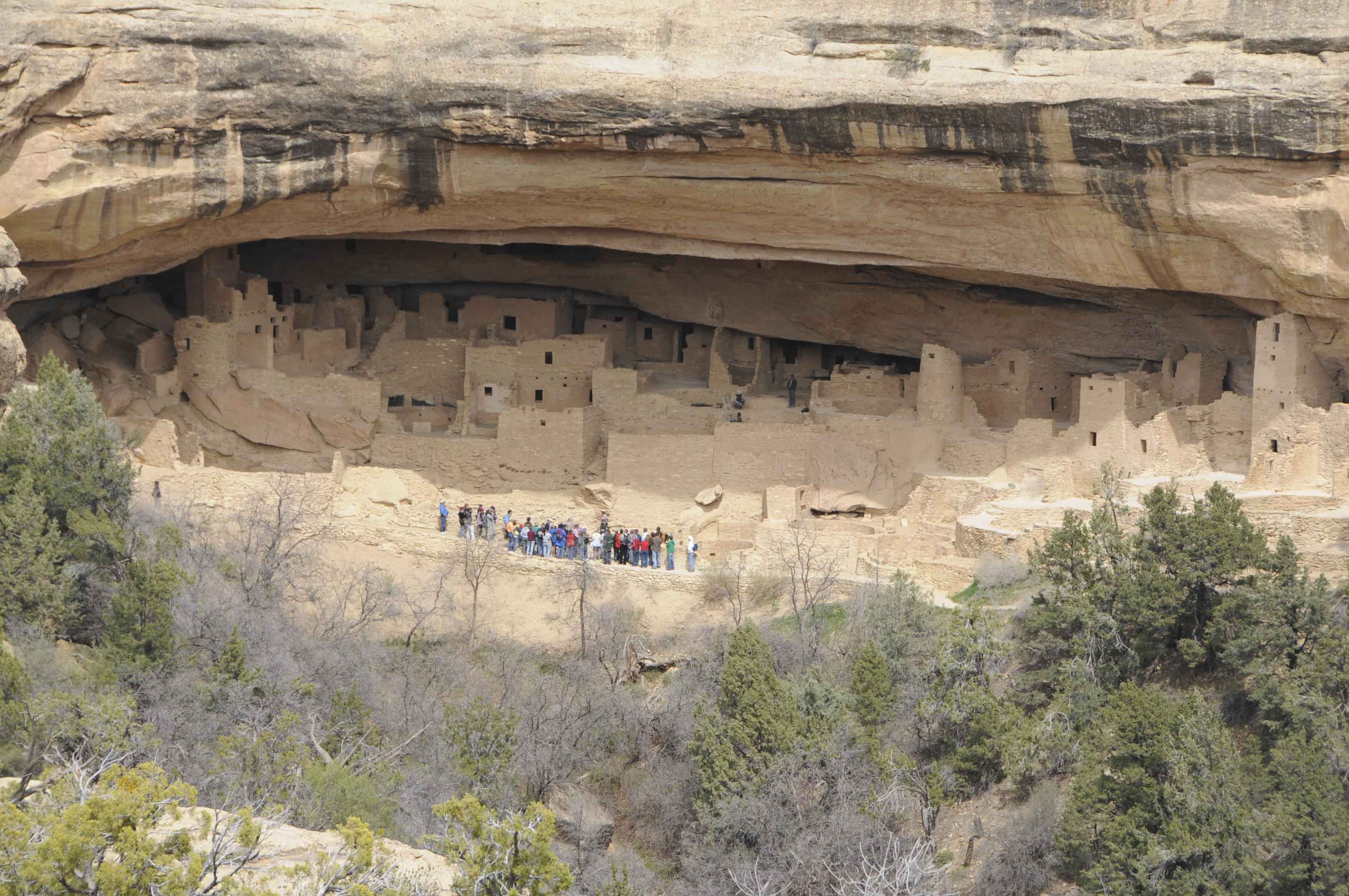Mesa Verde National Park Volume 2
Chapin Mesa is covered in Volume 2. Included in this Volume are mesa top sites, park buildings, and most of the sites along Mesa Top Loop Drive.
Cedar Tree Tower
Cedar Tree Tower is a small ceremonial complex located about 3/4 mile north of the entrance to Ruins
Road on Chapin Mesa. The ruin consists of a circular tower built on a sandstone ledge with a subterranean
kiva beside it. A tunnel leads from the tower to an opening next to one of the pilasters in the kiva.
Chapin Mesa Park Buildings
The preponderance of Park buildings and facilities are located on Chapin Mesa. These
include gift shops, reastaurants, Park administration buildings, and the Chapin
Mesa Archeological Museum.
Mesa Top Loop
In this section we will explore some of the earlier settlements and other ruins on
Chapin Mesa. The tour proceeds counterclockwise around Mesa Top Loop Drive (formerly
known as Ruins Road). The first part of the loop will take us past a series of pithouses,
kivas, and unit pueblo structures from Basket Maker III and early Pueblo periods. Here we
have the unique opportunity to study the evolution of puebloan architecture from AD 600
to 1200 all in one place. After touring these early mesa top sites we backtrack a little
to scope out Square Tower House in Navajo Canyon. Then we continue around the rest of
the loop drive for terrific views of several cliff dwellings in Fewkes and Cliff Canyons.
Site 117 - Earth Lodge B is a Basket Maker III pithouse constructed around AD 595. Earth Lodge B had a south-side antechamber with a stepped passageway, circular firepit, four holes for roof posts, and a storage cyst built into the sidewall. Try to identify these features in the following photos.
Twin Trees Village is comprised of Sites 101, 103, and 102, whose structures were built on top of each other.
Site 101 was a Basket Maker III pithouse (pithouse #1 in the photos) that was part of a larger village built
around AD 700. Pithouse #1 was constructed on the ruins of the antechamber of pithouse #2 in the photos.
Site 103 is part of a Pueblo I village built over the Basket Maker pithouses. It consists of a 4-room segment
and a deep square pitroom. Visible in this square pitroom are the ventilator tunnel, wing walls, fire pit, 5 holes
marking the position of a post and mud draft deflector, and roof post holes.
Site 102 is an early Pueblo II site consisting of 2 small rooms and a circular kiva built in the mid-900s.
This pueblo had the beginnings of stone masonry construction.
Site 16 includes the ruins of structures from 3 separate periods, an early Pueblo II unit
pueblo, a late Pueblo II unit pueblo, and a Pueblo III ceremonial structure with 3 towers and a kiva.
The early Pueblo II (900s) site consisted of a linear room block and a kiva. The late Pueblo II (1000s) site
was a small rectangular room block built on the ruins of the earlier unit pueblo, and a detached kiva. The
early Pueblo II kiva was backfilled with dirt removed during the construction of the late Pueblo II kiva.
One of the Pueblo III towers was built on top of both of the Pueblo II kivas.
Sun Point Pueblo (probably Pueblo III) was a village of 20 surface rooms.
These were built around a tower and kiva that were connected by a tunnel.
Square Tower House is located in an alcove in the west wall of Chapin Mesa.
Views presented here are from the Square Tower Overlook. Square Tower House had 7 kin
kivas and 70+ rooms. The namesake "square tower" is 4 stories tall, and once had a 3-story building
in front of it, and a 2-story building in front of that.
Sun Point View is an overlook located at the edge of Chapin
Mesa where Mesa Top Loop Drive turns 180° to follow the south rim of Fewkes
Canyon. Visible ruins include Sunset House and Cliff Palace in the east wall
of Cliff Canyon, and Sun Temple, Mummy House, and Oak Tree House on the north
side of Fewkes Canyon.
Fewkes Canyon joins with Cliff Canyon near Sun Point. Mesa Top Loop Drive runs along the south rim
of Fewkes Canyon. Near the head of the canyon there is a junction with a road that follows the north rim to Sun Temple.
Ruins in Fewkes Canyon include Mummy House, Oak Tree House, New Fire House, and Fire Temple.
Mummy House was built on the upper and lower ledges of an alcove below Sun Temple. Ten rooms and 2 kivas are
located on the lower ledge, and a two story building that contained a well preserved mummy is on the upper ledge.
Oak Tree House had 52+ rooms and 6 kivas. Retaining walls were
built in front of the alcove and the space behind them filled to create
additional level ground. Several storage rooms were built on a narrow ledge
above the main structure.
New Fire House and Fire Temple
New Fire House had 20 rooms and 3 kivas built on two ledges. Fire Temple
contained a rectangular great kiva. Features common to great kivas that
are visible include a large circular firepit, two rectangular vaults, and
a bench around the periphery. Some red and white plaster still remains
on the back wall.
Sun Temple construction started in AD 1275 but stopped a year or two after
that, and the structure was never really completed. The main part of the structure
consists of 2 circular rooms enclosed by two concentric walls in a D-shaped configuration.
The space between the walls was partitioned into a series of rooms connected by doorways.
A west annex consisting of a room block and two additional circular
rooms is surrounded by the outer wall, maintaining the D-shape. There is also a tower
to the east of the main structure. Sun Temple is thought to be a ceremonial structure,
and possible also an observatory of sorts.
The National Park Service capped the walls with cement, and in my visits as late as 1995 you
could walk on top of the walls. Sometime after that the NPS decided that wasn't such a good
idea, so there is no more wall walking.
Cliff Palace View Point, located near Sun Temple, is the
last stop on our tour. There are some cool views of Cliff Palace and
Sunset House from here. There is not much else to see on the way back.
Be sure to stop at Spruce Tree Terrace Cafe for a snack and cold beverage
at the end of the tour.
Source material obtained from Anasazi Ruins of the Southwest in Color by Ferguson and Rohn and National Park Service sources.
Use the form on the Home Page to submit comments, questions, or suggestions. TD Productions Copyright © 2019
